2 Days in Tokyo: What to Do for a Fun & Cultural First Visit
When my daughter and I started planning our trip, we weren’t sure exactly what to do in Tokyo in 2 days—but we knew we wanted a balance of culture, fun, and food we’d remember.
We ended up spending more time in Tokyo than just 2 days, but after experiencing a lot, I can confidently say what I’d recommend if you only have a couple of days to spend in this incredible city.
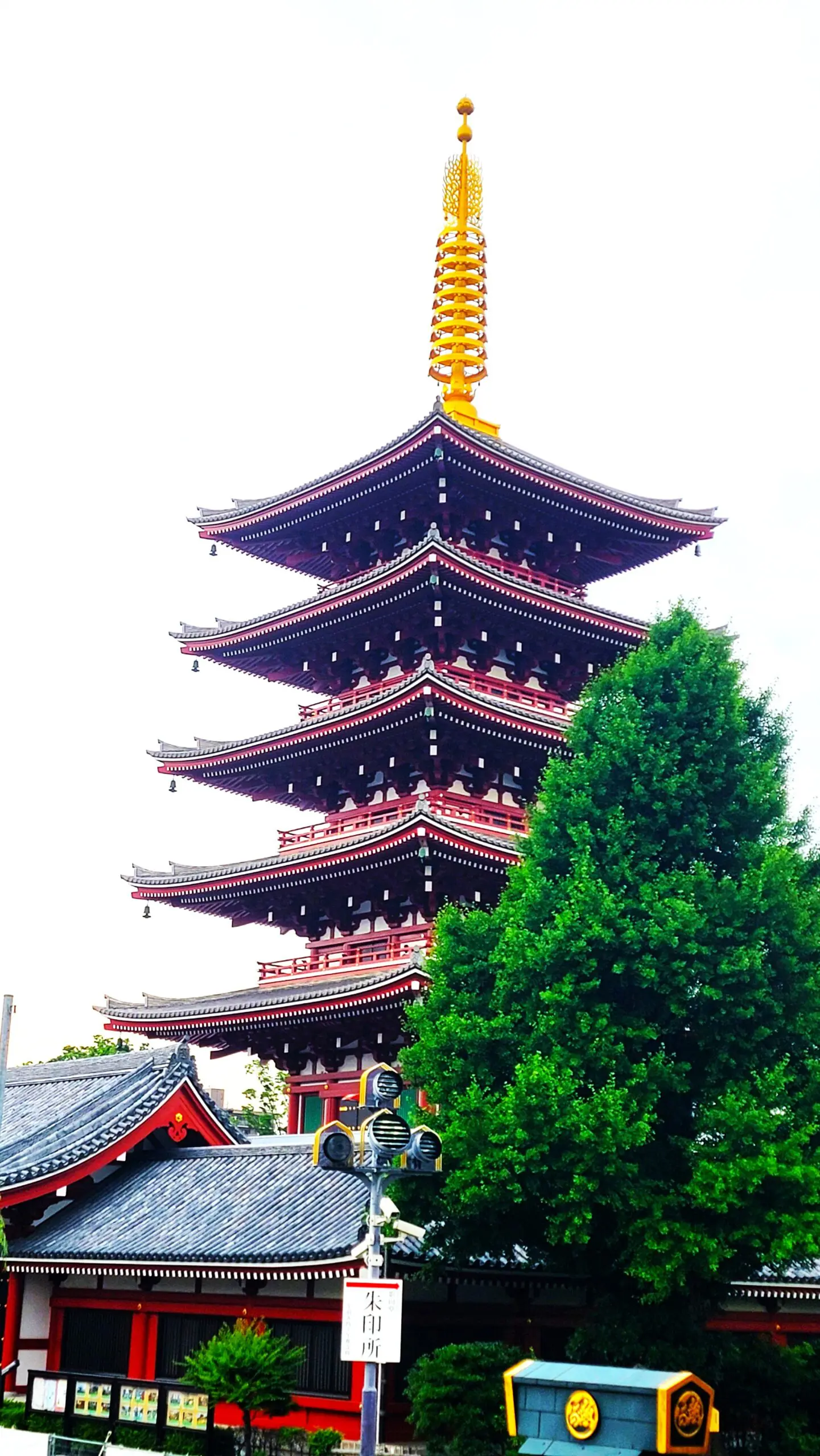
If you’re traveling with teens (or even if you’re not), this two-day Tokyo itinerary blends iconic sights with one-of-a-kind cultural experiences—like a peaceful morning at Meiji Shrine, matcha-fueled shopping in Harajuku, and a bonsai and tea ceremony that may turn out to be the most memorable and authentically Japanese part of your trip!
Visual, At-A-Glance Summary of Your 2 Day Itinerary
2 Days in Tokyo Itinerary
I’m excited to share the best of what we saw and did while we were in Tokyo in this 2-day itinerary. Plus, I’ve included some alternate itinerary options in case, for example, you’re not as excited about cuddling with micropigs as we were. 🐖
Day 1 – Tradition and Pop Culture in Central Tokyo
8:00 AM – Start Your Day with a Half-Day Tokyo Tour
If this is your first time in Tokyo, a half-day guided bus tour is a smart way to kick things off. You’ll get a nice overview of some of the key cultural experiences of Tokyo and get a sense of the city broadly without having to drive yourself.
☑️ My daughter and I booked the Hato Bus Tour from Shinjuku and loved how much we got to see without the stress of figuring out transport or timing. 💃🏽
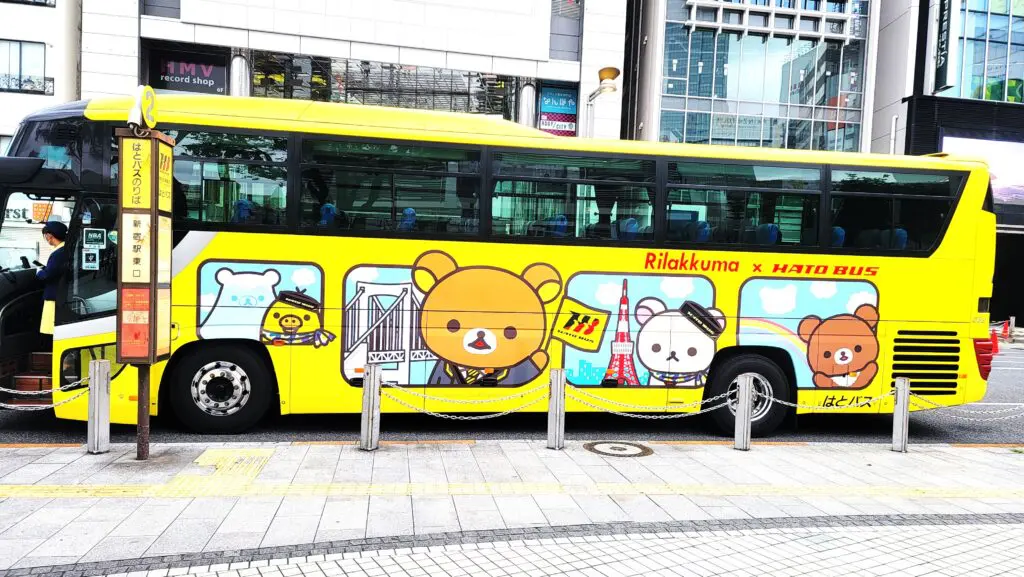
Note: We were easily able to locate and walk to the meeting point to start the tour, which was in Shinjuku, where our hotel was located.
But if you aren’t staying in Shinjuku, you may need to rely on an Uber or public transportation to get to the meeting point. The Tokyo train system can feel a little overwhelming until you get acclimated – so definitely keep that in mind as you are deciding how best to get to the meeting spot.
Imperial Palace East Garden
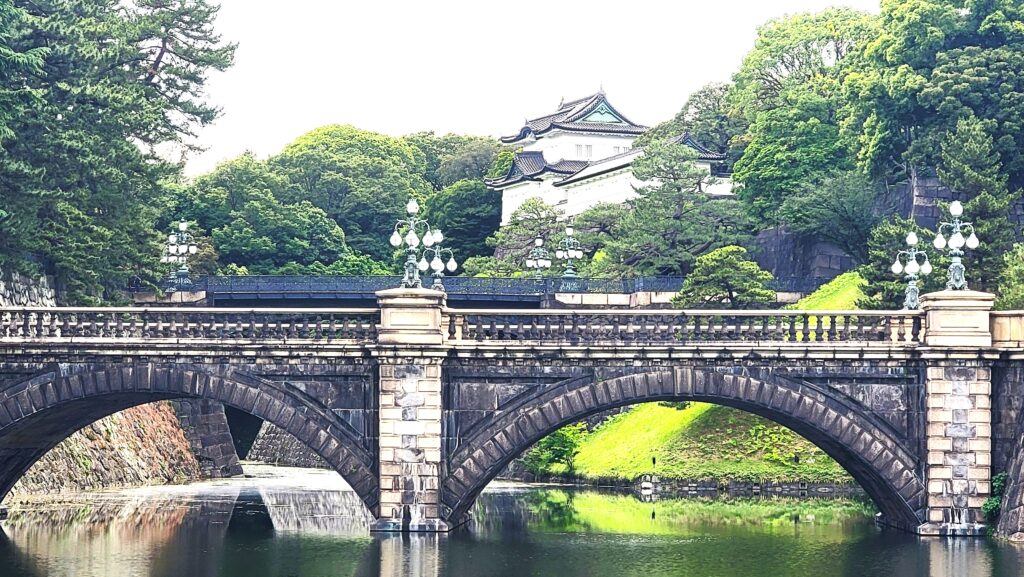
The tour began at the East Garden, located next to the Tokyo Imperial Palace—considered the largest castle site in the city.
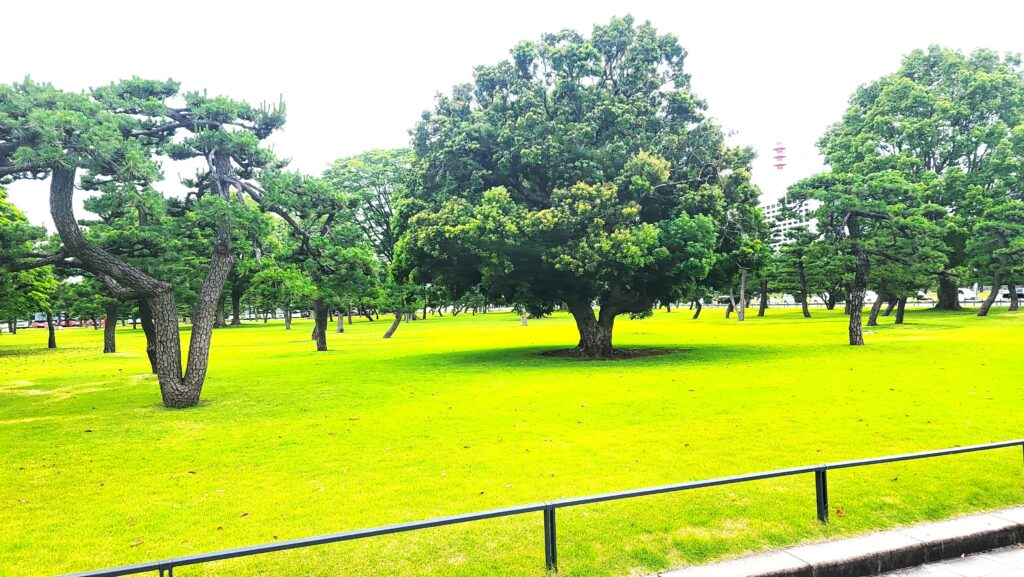
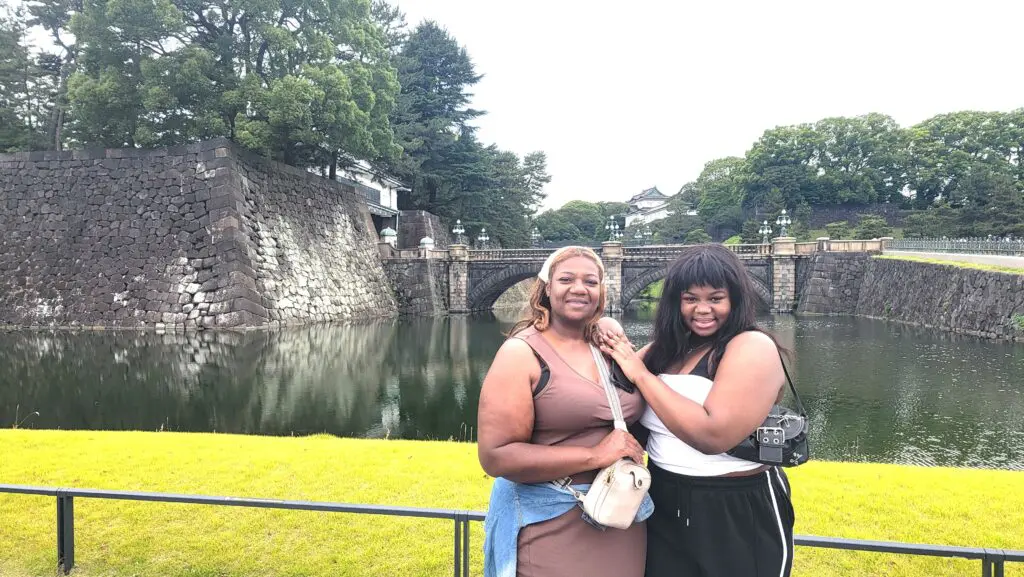
We walked past stone foundations and moats that date back to the Edo period, surrounded by serene gardens that feel like a world away from Tokyo’s buzz.
My daughter spotted a small vendor selling matcha ice cream on the grounds and couldn’t resist.
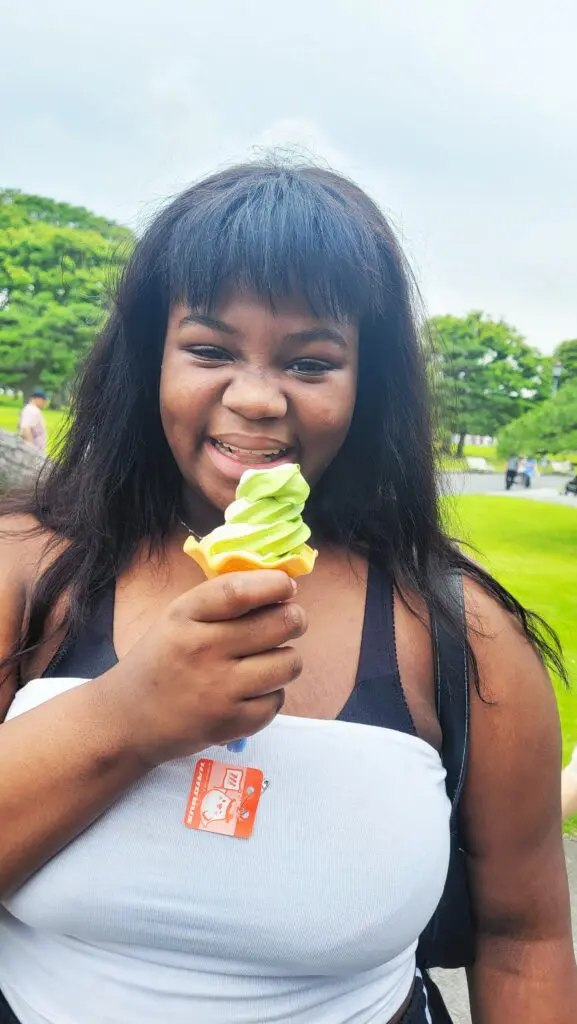
Yes, it was a bit early—but hey, we were on vacation. And Japan basically equals matcha, so she had to try it!
Statue of Kusunoki Masashige
Just outside the palace area is a massive bronze statue of Kusunoki Masashige, a samurai famous for his loyalty to the emperor.
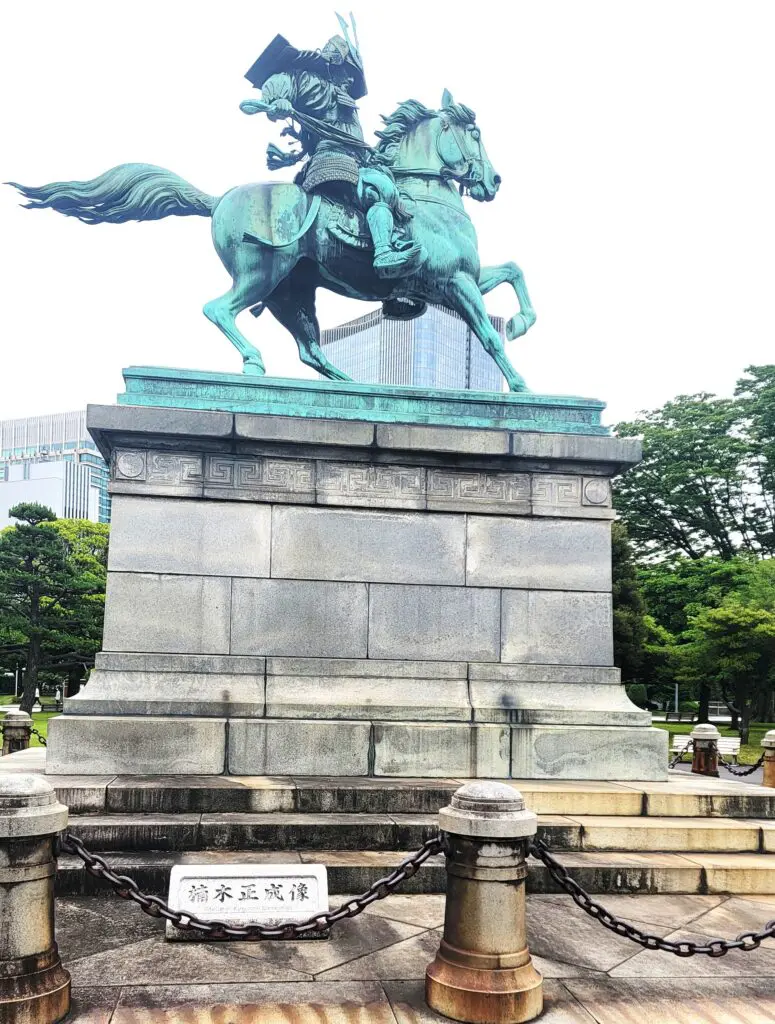
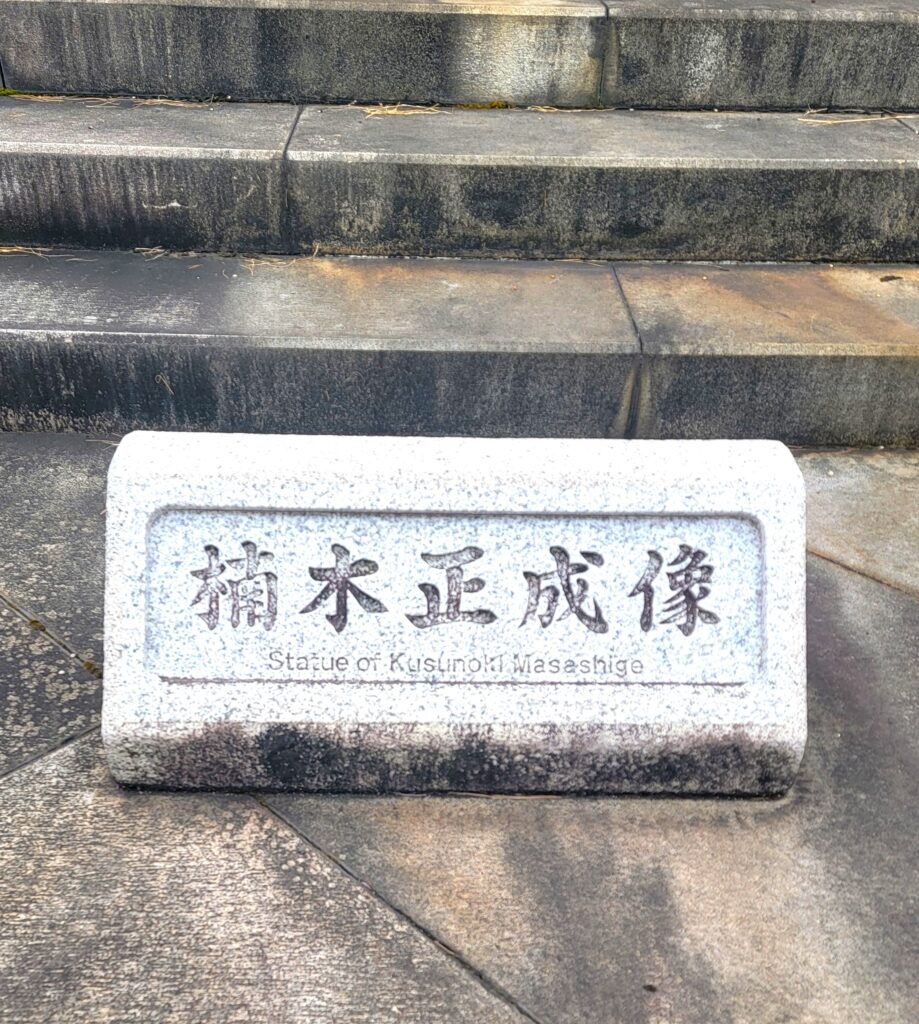
During this quick stop, our guide shared just enough background to help us appreciate its historical significance.
Senso-ji Temple
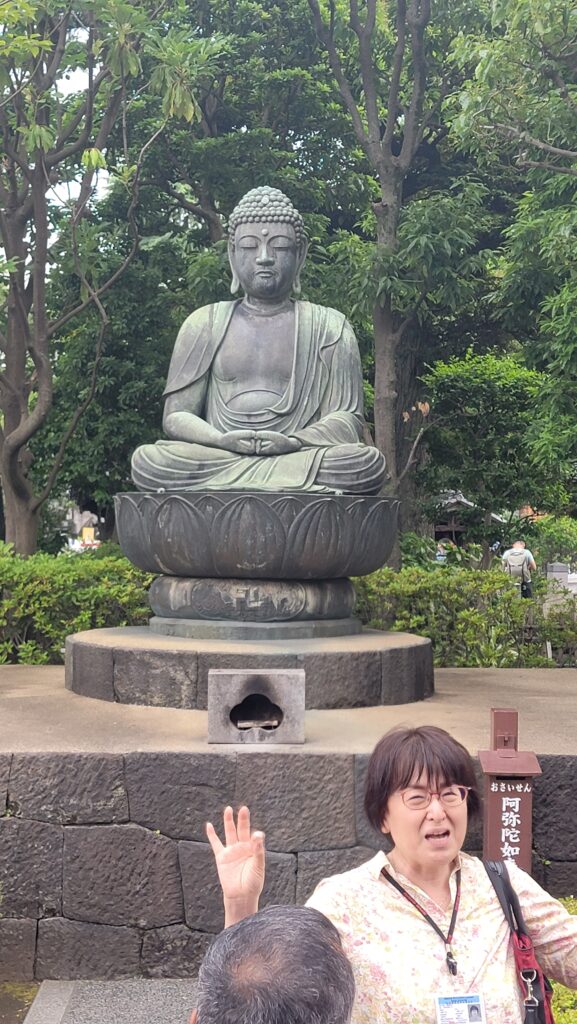
As the morning went on, the crowds definitely increased. By the time we reached Senso-ji Temple in Asakusa, it felt like everyone in Tokyo had arrived at once! We were there in summer, so that likely contributed to that ‘tight’ feeling—but even with there being so many people there, this was my favorite stop of the tour.
The temple is stunning. It’s the oldest temple in Tokyo, and unlike many other ‘tourist spots’ in Tokyo, this one is also loved by and visited by locals. And maybe that is what made it feel so authentic.
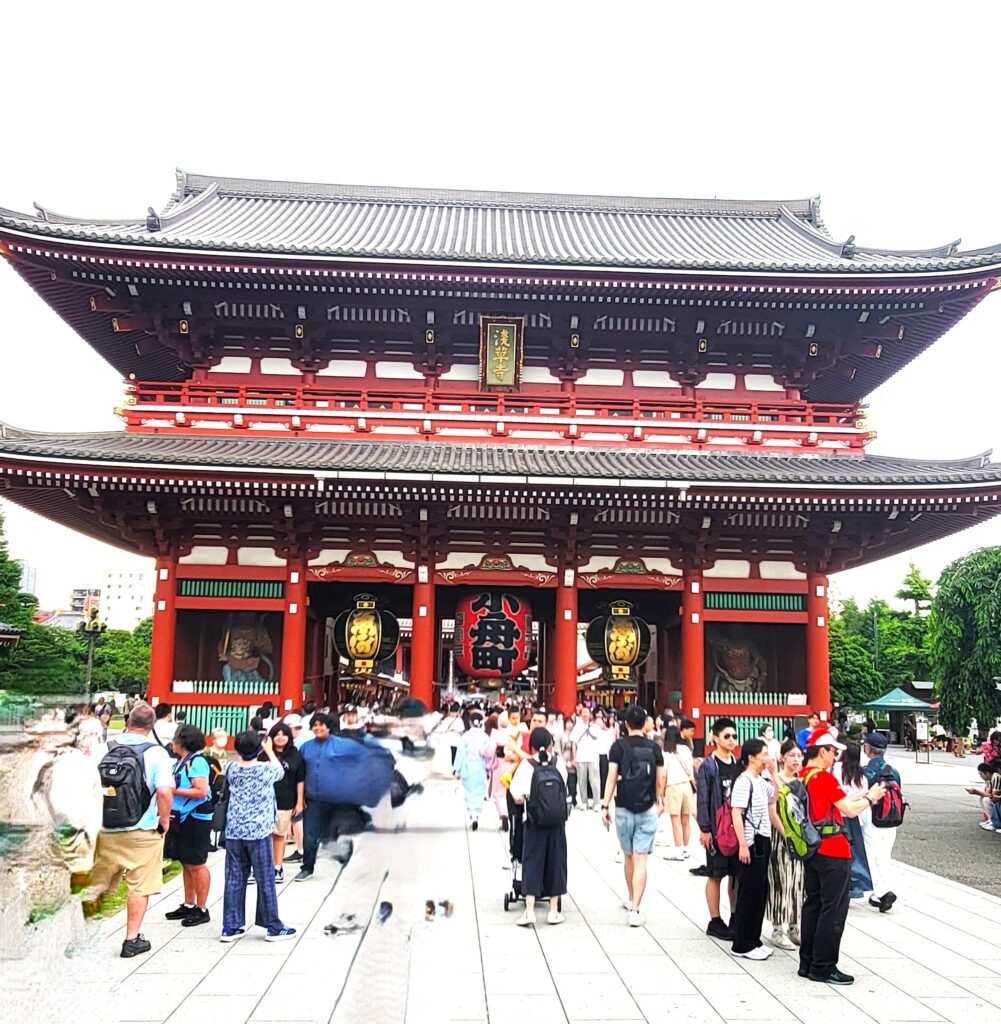
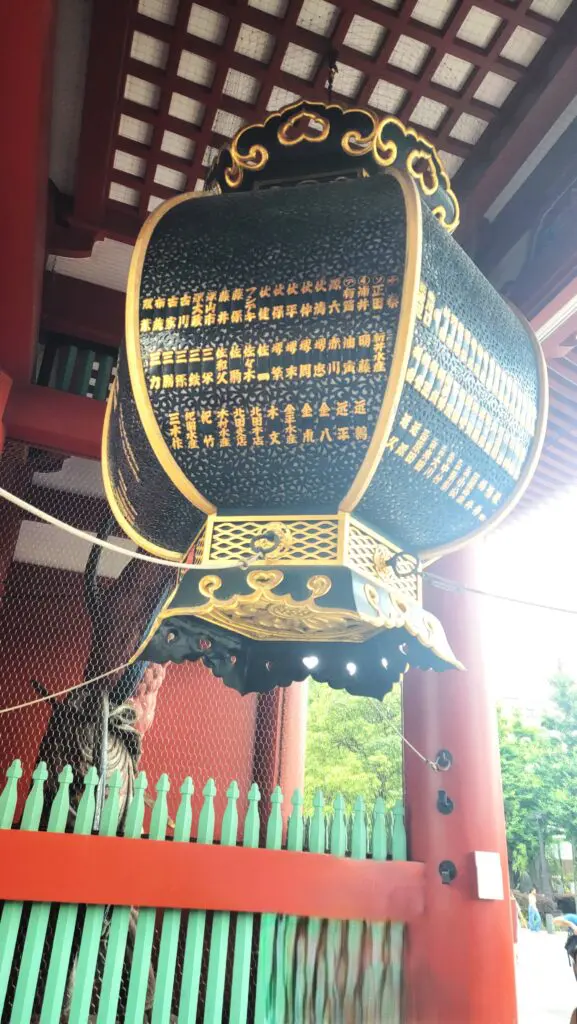

There is incense in the air throughout the area. It’s beautiful and dynamic in a way few places are. Plus, it just feels sacred, if that makes sense. Maybe that’s why it was my favorite.
Nakamise Shopping Street
Leading up to the temple is Nakamise Street, which is packed with shops and stalls selling souvenirs, snacks, and traditional goods. We sort of zoomed through this part because it was super crowded.

Still, my daughter found a few quirky souvenirs (she’s a professional shopper – ha!), and we both loved watching the local snack vendors at work.
If you’re visiting in an off season, the crowds may be thinner. But even with the summer surge, this part of Tokyo was unforgettable and absolutely worth our morning.
However, if you’re visiting the Senso-ji Temple and Nakamise Street on your own, I suggest going earlier in the morning for a more relaxed experience.
💞 All in all, we loved how much we got to see and experience in just half a day – plus with a knowledgeable guide who could answer all of our questions and help us get the best experience! 💞
🚌 Learn more about the Hato Bus Tour of Tokyo here!
12:30 PM – Lunch Break
After a packed morning of sightseeing, you’ll definitely want to sit down for lunch. Your own tour will likely drop you off in the same area where you were picked up, so your lunch options will depend on your location immediately after the tour.
However, if you take the Hato half day bus tour we did, it returns to Shinjuku, which makes it easy to grab a bite without straying far.
Shinjuku has everything—from standing sushi counters to department store food halls. We chose Ramen Hayashida, a casual ramen spot near Shinjuku Station.
We sort of stumbled on the restaurant, but it worked out well. The food was really yummy, the ordering experience was unique (you order in advance at a machine) – and we later learned that Hayashida consistently ranks among the top ramen shops in the area.
If sushi’s more your style, this is a good time to try a kaitenzushi (conveyor belt sushi) restaurant. They’re fun and affordable, and offer tons of variety.
2:00 PM – Explore Takeshita Street in Harajuku
I recommend that you head to the cool Tokyo neighborhood Harajuku after lunch to explore Takeshita Street. This was my daughter’s absolute favorite parts of the trip.
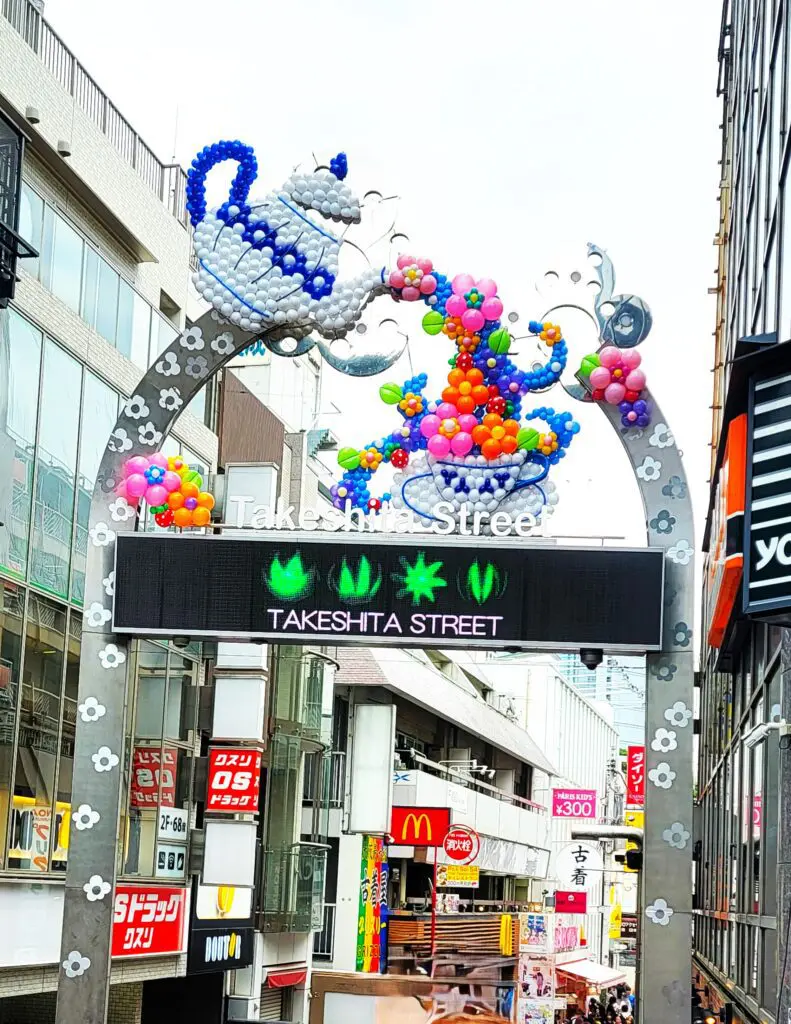
And even though I knew nothing about it beforehand (my daughter did the research for this particular experience, and I just went with the flow), it turns out that I really enjoyed visiting this admittedly cooler-than-me neighborhood as well.
Getting There
We took the JR Yamanote Line from Shinjuku Station—a quick, easy ride of just two stops to Harajuku Station. From there, Takeshita Street is directly across the street from the exit.

If you’re coming from elsewhere in the city, the Tokyo Metro Chiyoda Line also serves Harajuku (via Meiji-Jingumae Station), and taxis or Ubers are an option if you prefer door-to-door convenience. Just know traffic can be slow in this area, especially on weekends.
Note: We explored Harajuku with a private tour guide from GetYourGuide.com. I recommend this for a lot of reasons, particularly if you have limited time and want to make sure you fit in certain experiences. But, one of the huge values for us to using a knowledgeable guide is that she was with us when we were experiencing the Tokyo train system for the first time!
The Harajuku Experience
Harajuku isn’t just a place—it’s a vibe. It’s a high-energy, colorful explosion of youth fashion, creativity, and street food centered around the narrow, bustling Takeshita Street. This was the area my fashion-loving teen was most excited to see, and it did not disappoint.
Mipig Cafe
The first stop we made was to the Mipig Café, where we got to sit and cuddle with the tiniest, most adorable micro pigs imaginable. It’s a uniquely Japanese experience, and one that felt totally worth planning the day around.
Just make sure to double-check the location. (There are two Mipig Cafés in Harajuku, and we accidentally went to the wrong one at first.)
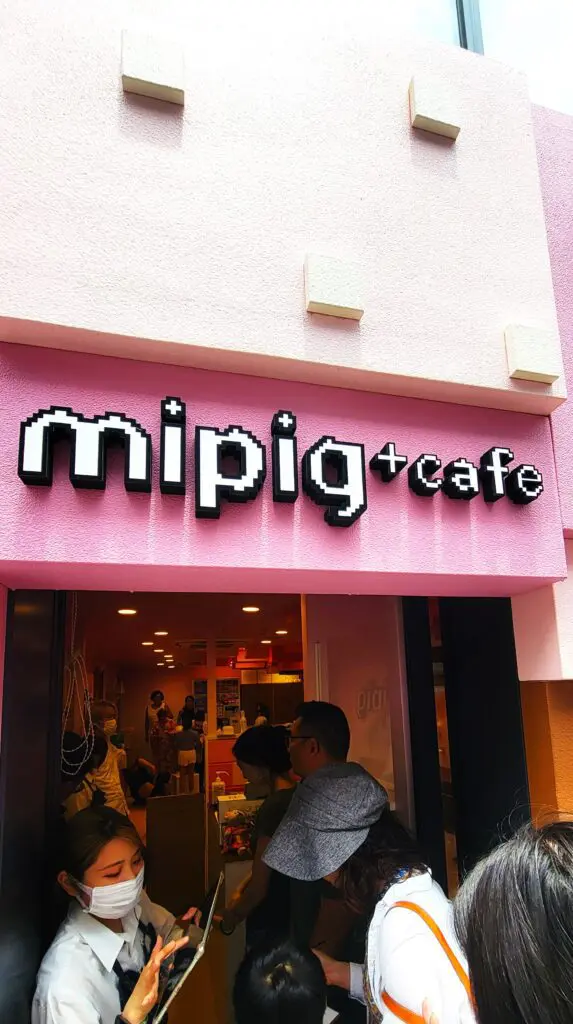
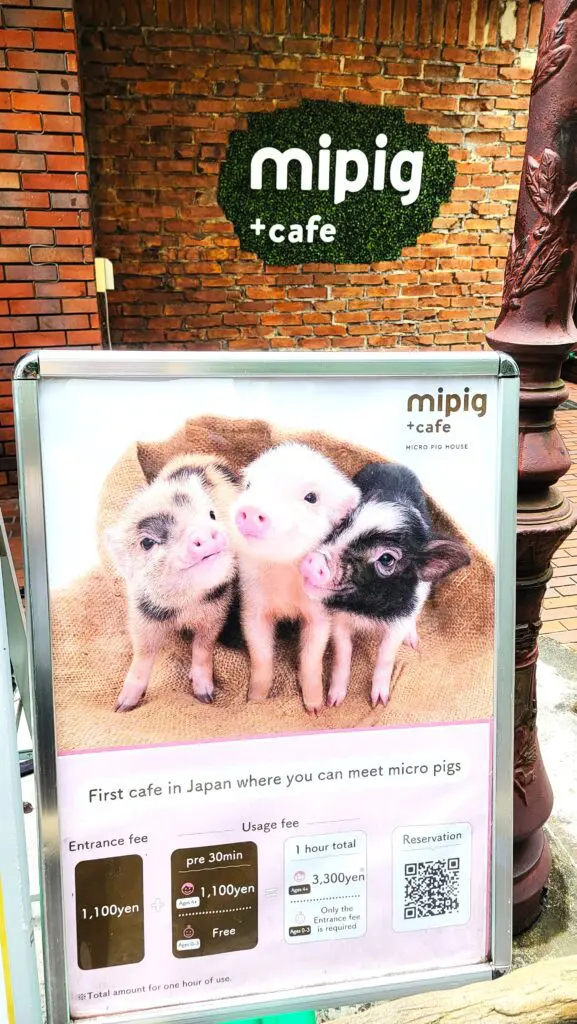
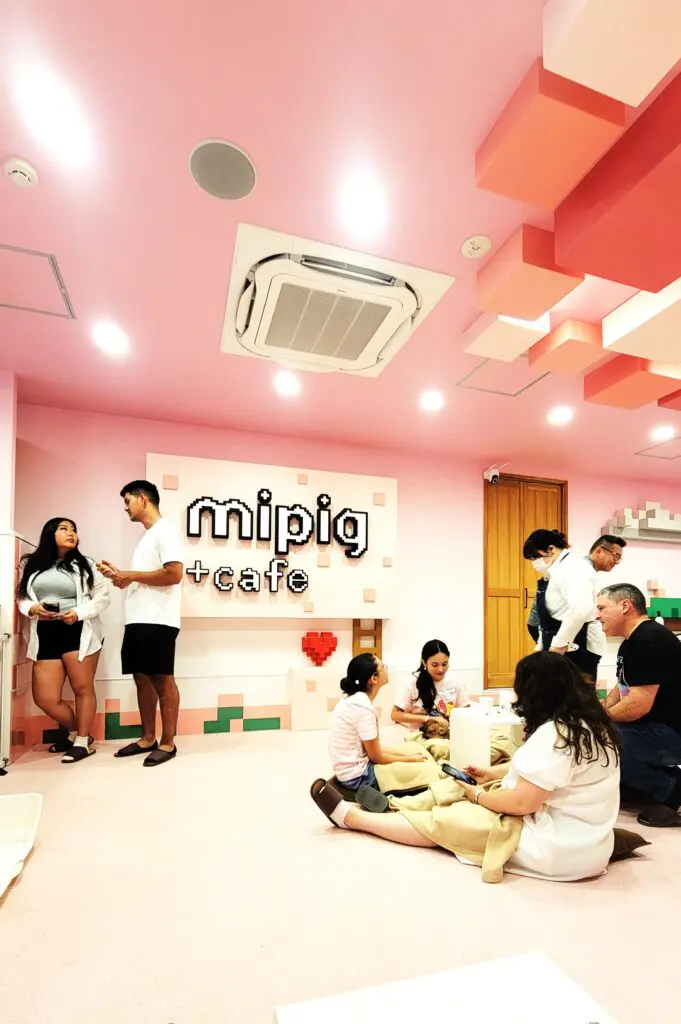
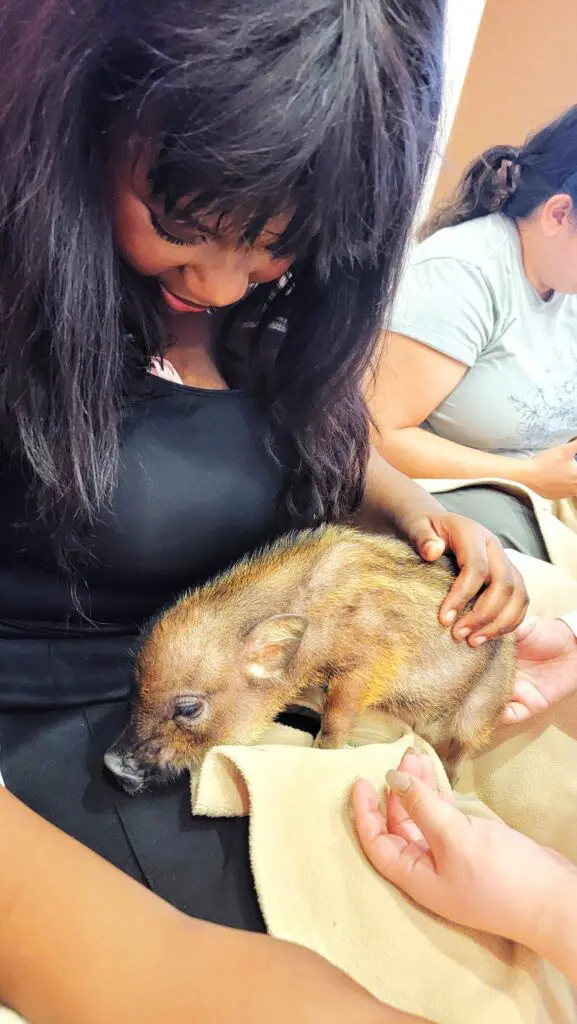

Tip: If you want to include this (or any of the other interesting ‘animal cafes’ into your itinerary, BOOK IN ADVANCE! While we were walking in during our own appointment, we observed several people who were trying to walk in off the street being turned away. These unique cafes are super popular!
Sanrio Store
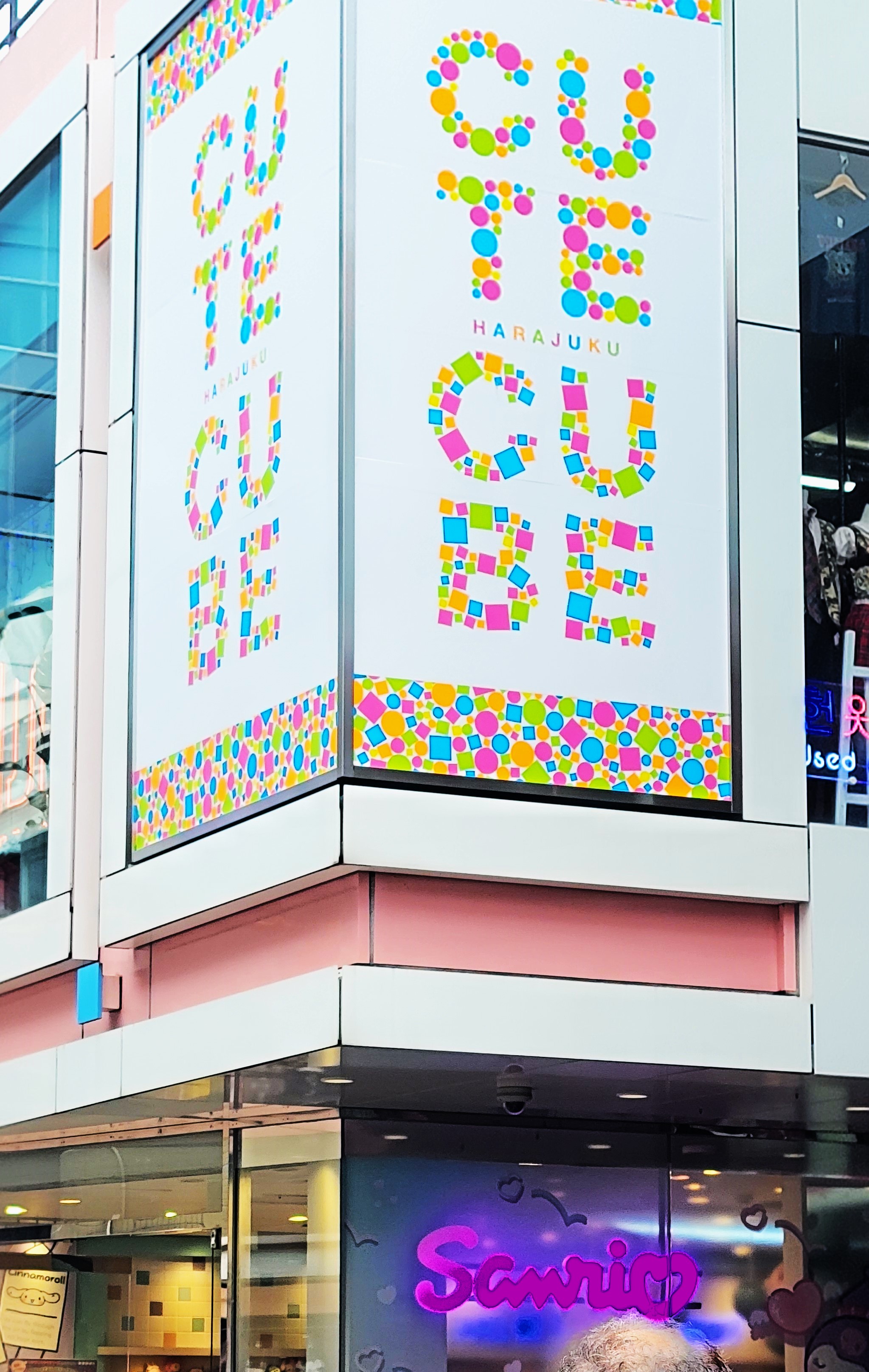
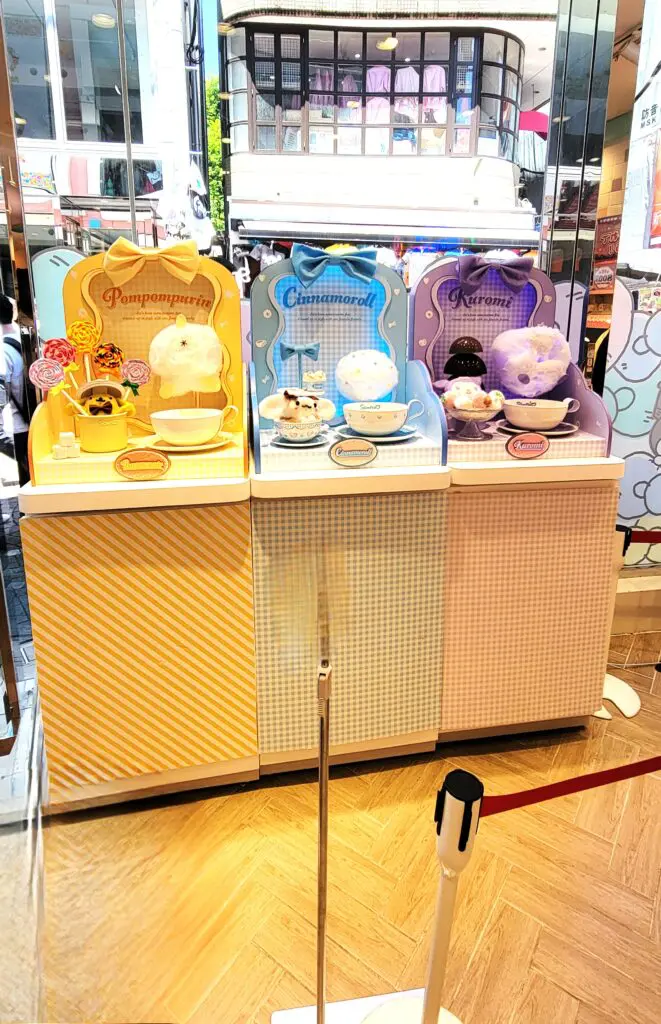
Directly across from the Mipig Café is the Sanrio Store. If you or your kid is into Hello Kitty or Keroppi, prepare to be overwhelmed in the best way. It was a full-on cuteness explosion—plush toys, stationery, clothes, everything. Watching my “too cool” teenager completely light up over a Hello Kitty coin purse was one of the sweetest moments of the day.
Shopping and People Watching on Takeshita Street
Because we were initially rushing to our micropig appointment when we first got to Takeshita Street, after Sanrio, we circled back to the top of Takeshita Street and worked our way down so we could take in the full experience properly.
We popped in and out of tiny boutiques packed with edgy and colorful fashion. And it was cool to see the fashion not just in stores but on actual people as well. Expect to see everything from pastel-clad “kawaii” girls to full-on gothic Lolitas—this is the epicenter of Tokyo’s youth fashion scene.
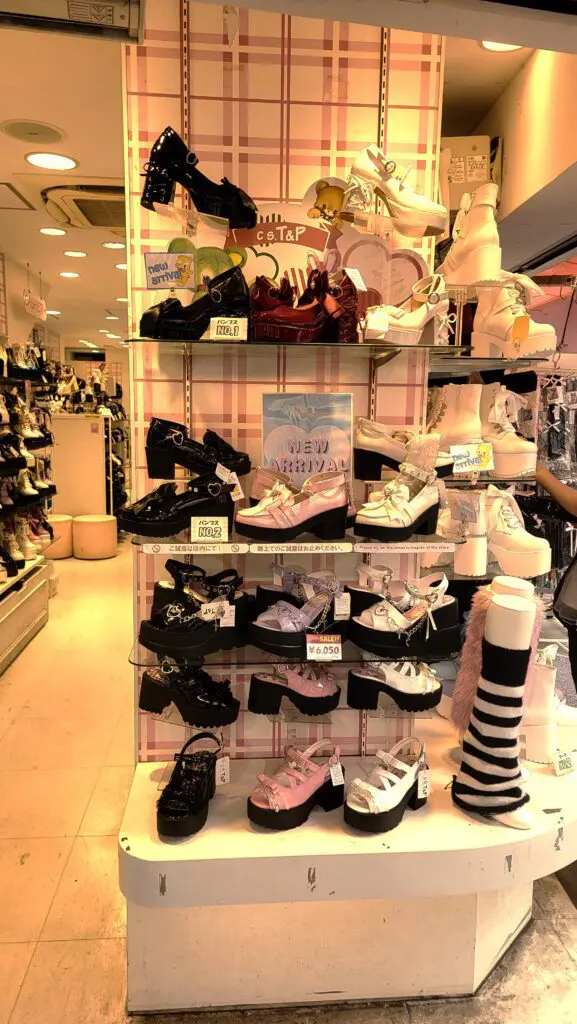
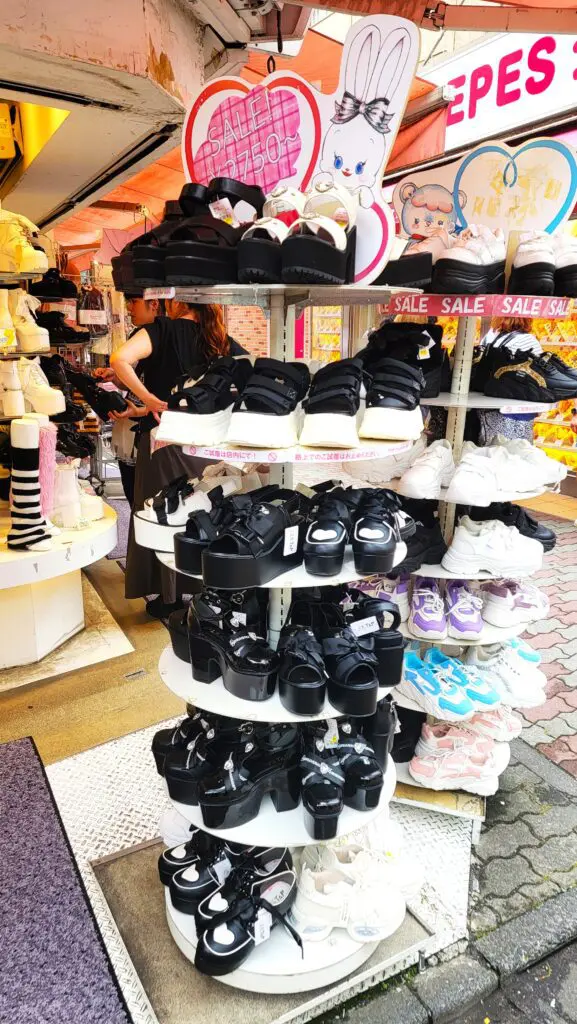
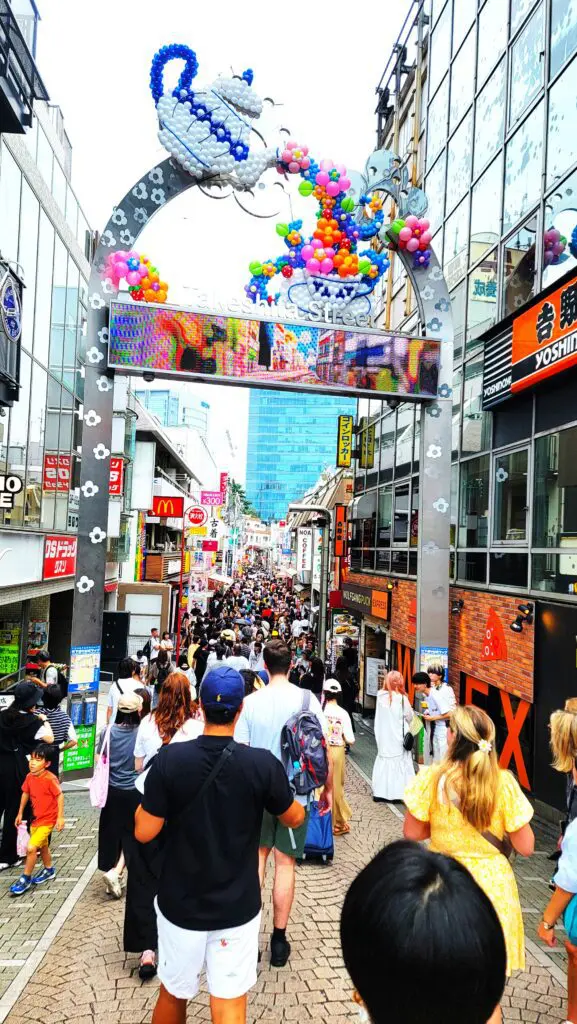
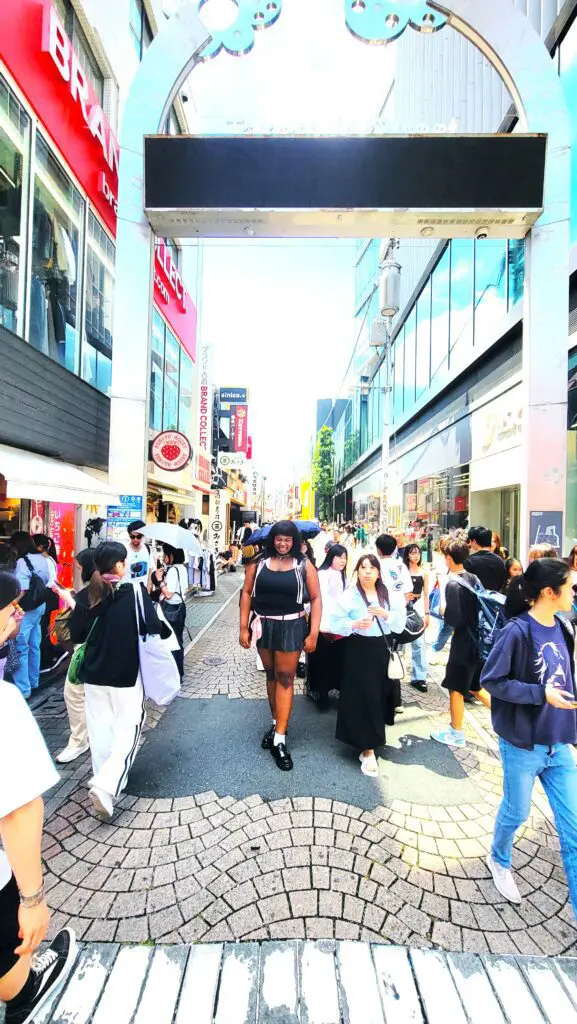
If you or your teen has an eye for trends or just likes unique finds, this street is heaven. We didn’t leave empty-handed. My daughter found some really funky black platform boots with Japanese embroidery throughout. And I loved that for her!
I’m not a huge ‘souvenir’ person myself. I’d much rather bring home something unique and usable – something with meaning that I can’t get anywhere else. Something that won’t just be sitting on a shelf somewhere. Every time she wears the boots, my daughter gets asked about them. And she just loves being able to say she got them in Tokyo. Ha.
And the food on Takeshita Street? It’s as outrageous as the fashion.
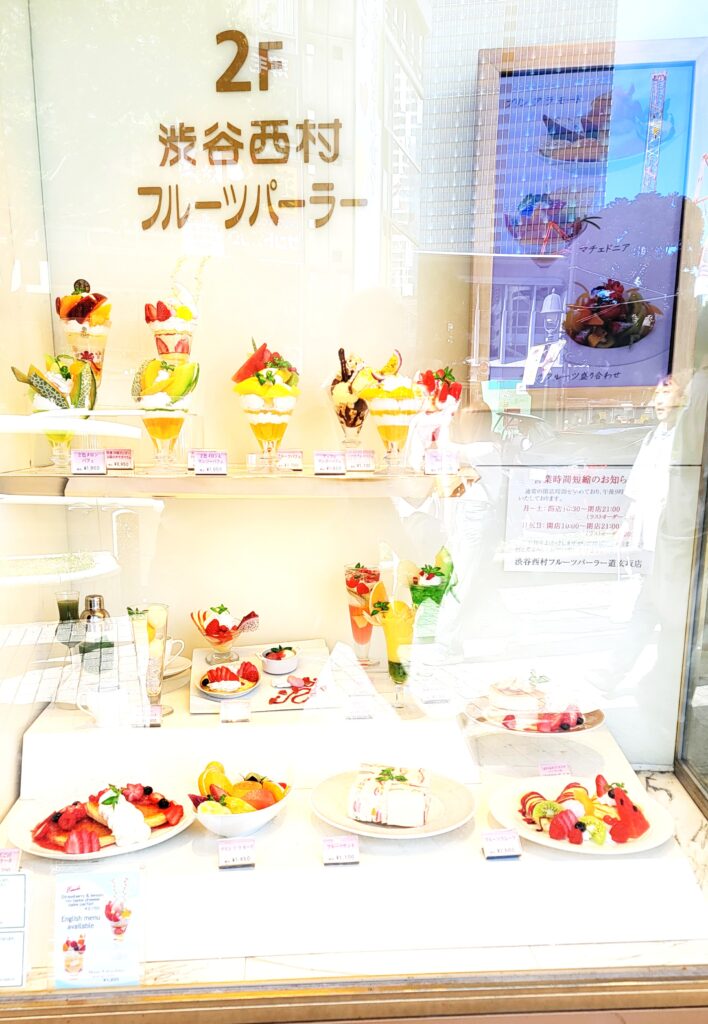
We grabbed rainbow cotton candy from Totti Candy Factory and watched people line up for towering crepes and rainbow cheese toast. Every corner had something colorful, sweet, and photo-worthy.
Even if you’re not into shopping, this place is a people-watching goldmine. It’s sensory overload in the best way. Depending on your pace, you could easily spend a few hours here. We capped ours at about 90 minutes since we had a lot more on our list, but every minute was packed with fun.
What’s Your Tokyo Travel Style?
If you’re wondering whether Harajuku’s bold, fashion-forward energy is a good fit for you—or if another part of Tokyo might match your style better—take my Tokyo Travel Style Quiz. It’s a quick way to figure out which vibes and types of experiences you’ll enjoy most on your trip.
4:00 PM – Walk Through Omotesando
After the chaotic fun of Takeshita Street, Omotesando feels like stepping into a different city. Just a 10–15 minute walk away, this wide, tree-lined boulevard is known for its upscale shopping and architectural design. Our guide recommended we include it not just for the contrast, but so I could enjoy something a little more grown-up while my daughter caught her breath.
We headed to Omotesando Hills, a sleek shopping complex designed by architect Tadao Ando. Even if you’re not in the market for luxury brands like Jimmy Choo or Valentino (I definitely wasn’t!), the building itself is worth checking out.
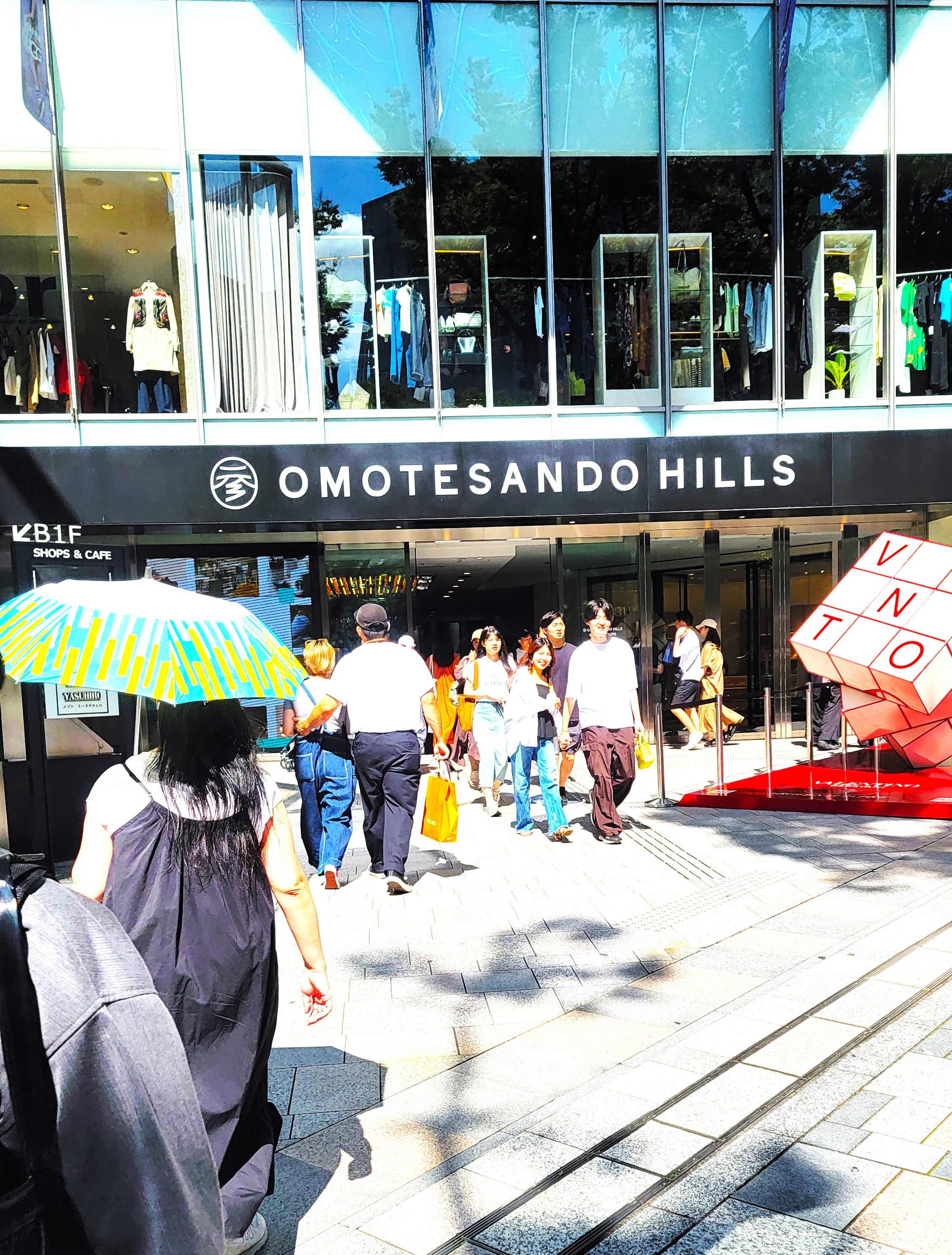
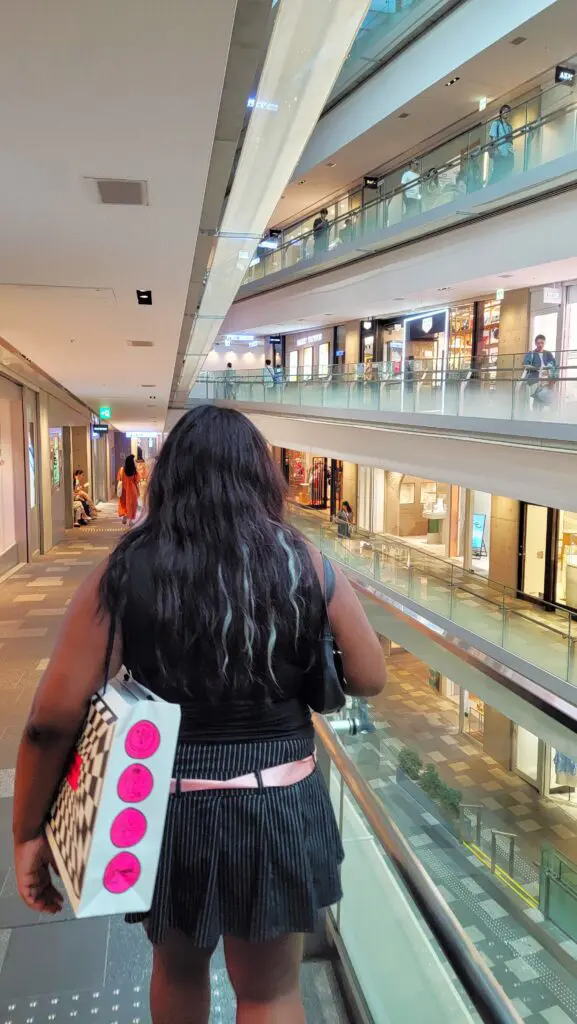
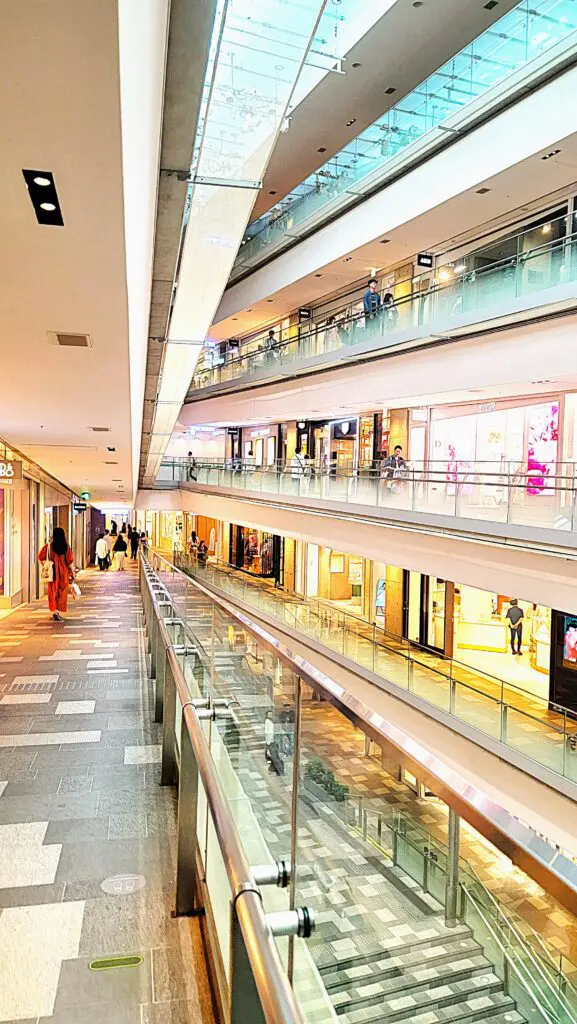

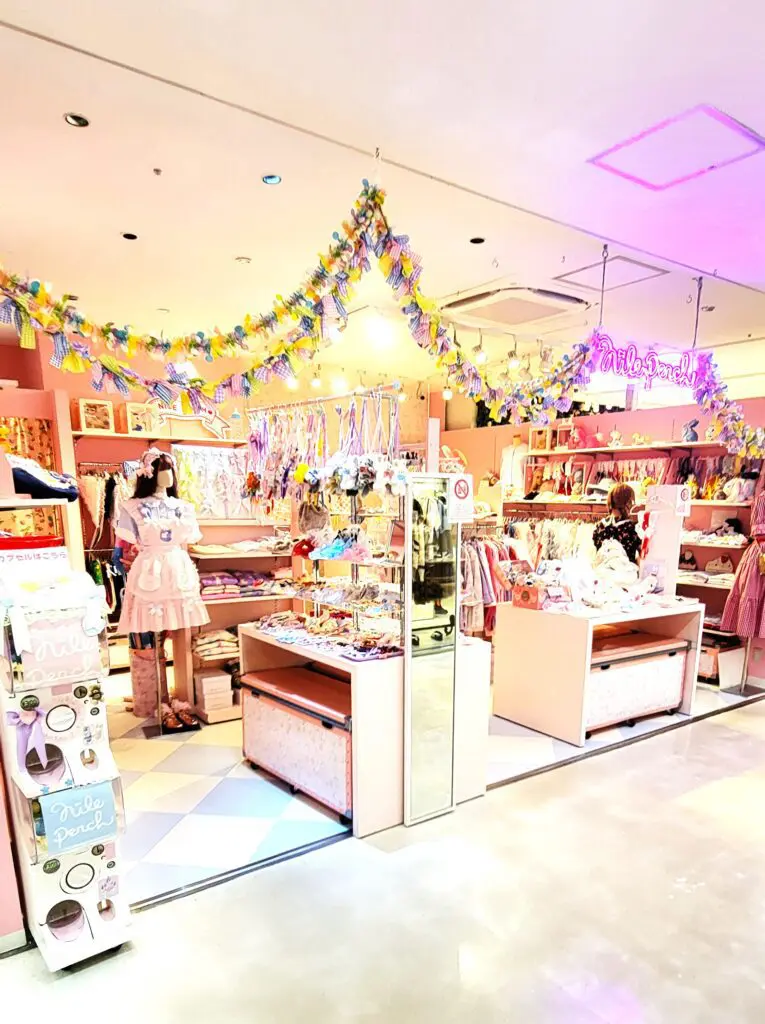
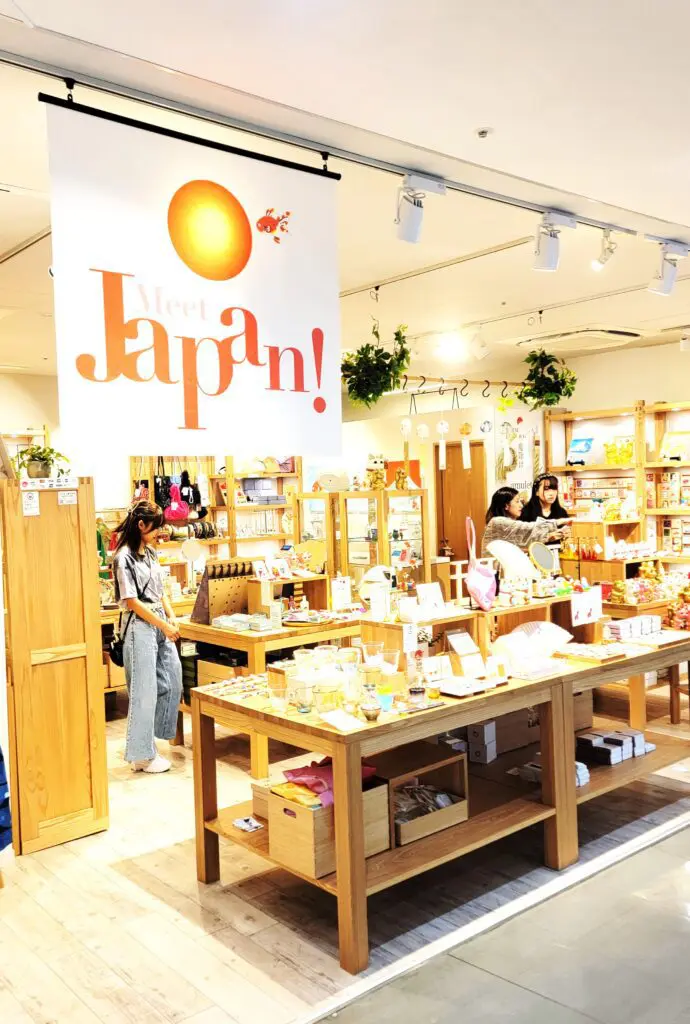
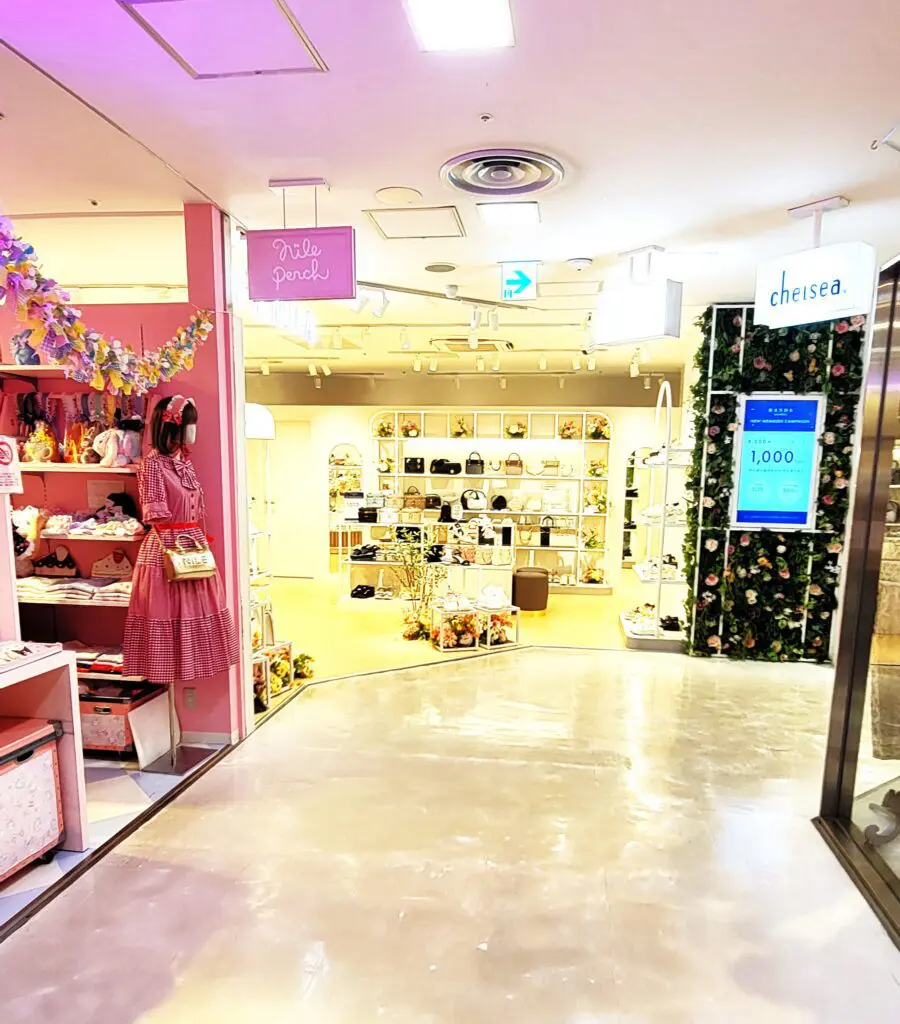
Its spiral walkway means you can slowly ascend through six stories without needing to take stairs or escalators. It’s elegantly designed, stuffed with really chic stores, and just really impressive—very Tokyo.
We also wandered into smaller shops along the way—many are tucked down side streets or hidden behind minimalist facades. These are great for spotting local designers and grabbing a matcha latte at one of the many stylish cafes.
Speaking of matcha, we made a stop at The Matcha Tokyo Omotesando, a minimalist tea bar that specializes in high-quality organic matcha. It struck the perfect balance between traditional and modern.
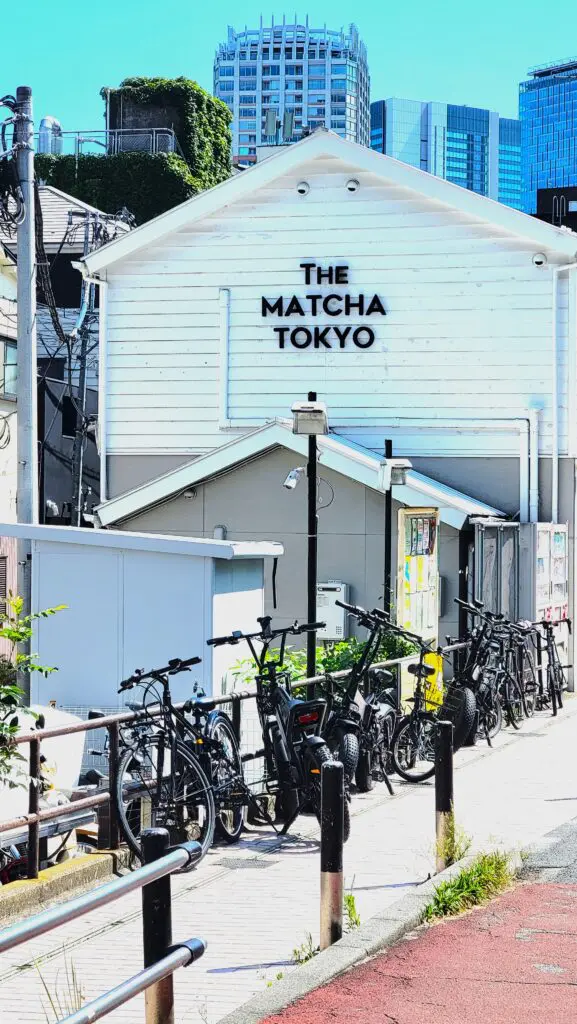
My daughter got a matcha ice cream (again!), and I tried one of their signature matcha drinks.
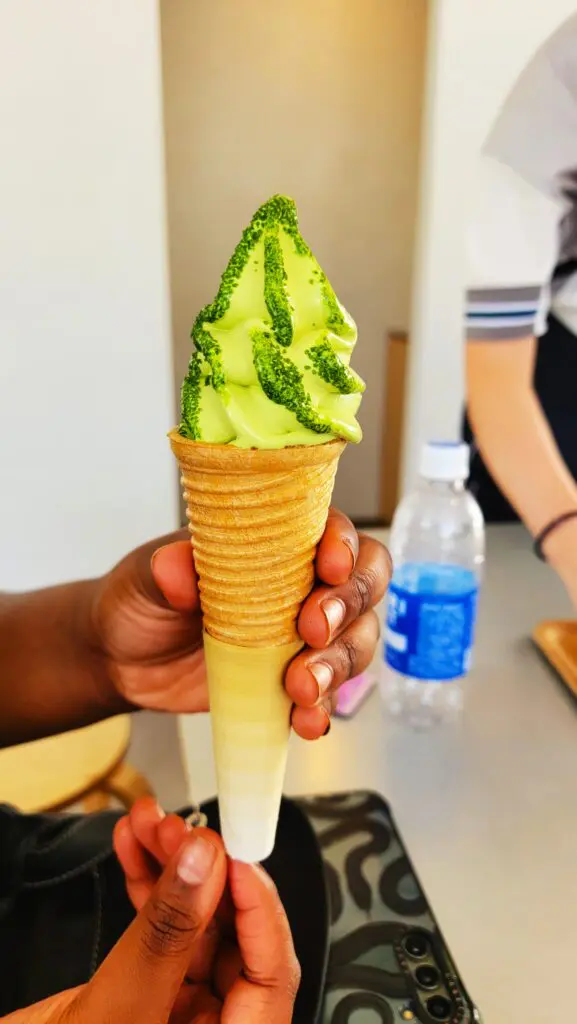
I’m not a matcha person (at all), but I was talked into trying one (we’re in Japan, right?), and it was ok. Actually, according to my daughter, it was great (haha) – smooth, earthy, not bitter!
Omotesando is a great area to slow down for a bit. You don’t need to spend hours here, but even 30 to 60 minutes gives you a feel for Tokyo’s more refined, design-forward side.
6:00 PM – Traditional Geisha Show and Dinner or Night Out
For your first night in Tokyo, you’ve got two very different—but equally memorable—options depending on who you’re traveling with.
Geisha and Dinner Experience
If you’re looking for something more cultural (or something that you can do with younger members of your travel party), I highly recommend booking a traditional geisha dinner experience, like this one through Viator. It’s a rare opportunity to enjoy live entertainment in the form of music, dance, and games hosted by real geisha in an intimate setting. It’s also a beautifully choreographed window into an art form that’s centuries old. These dinners typically start around 6:00 or 6:30 PM and last a couple of hours.
☑️ This beautiful, cultural, and educational geisha experience includes a multi-course traditional meal and the chance to interact with the geisha—a fascinating and surprisingly fun way to spend the evening.
If you’re not traveling with kids or teens—or just want something more laid back—you might prefer checking out Tokyo’s nightlife. For a guided experience, consider the Tokyo Bar Hopping Tour in Shinjuku. This tour takes you through the hidden alleys of Shinjuku, visiting three local izakaya bars where you can enjoy a variety of Japanese dishes and drinks. It’s a great way to experience the local nightlife and cuisine in a small group setting.
Whichever direction you go—traditional and elegant or high energy and casual—you’ll end your first night in Tokyo knowing even more about the culture of this incredible city.
Where to Stay: Keio Plaza Hotel Tokyo
If you’re looking for a comfortable, well-located base for your 2-day Tokyo trip, we loved staying at Keio Plaza Hotel Tokyo in Shinjuku. It’s a large, modern hotel with fantastic service, multiple dining options, and easy access to the Shinjuku train station—something we appreciated more and more as we bounced around the city.
We especially liked how close it was to shops, restaurants, and nightlife, but it still felt peaceful and quiet inside. The rooms were spacious by Tokyo standards, and the staff was incredibly helpful.
✅ If you want to see why it worked so well for us, I wrote a full review that breaks it all down: Keio Plaza Hotel Tokyo Review.
Not sure if Shinjuku is the right area for you? I also have a detailed guide to help you compare the best areas to stay in Tokyo depending on your priorities—whether it’s family-friendly neighborhoods, nightlife, or easy airport access.
Day 2 – Serenity, Style, and Cultural Immersion
7:30 AM – Visit Meiji Jingu Shrine
Start your second day with a peaceful walk through one of Tokyo’s most iconic Shinto shrines. Meiji Jingu opens at sunrise, and I highly recommend arriving early (not sunrise, necessarily, but early!) — not only to beat the crowds, but also to experience the grounds at their most serene. There’s something about walking through the towering torii gates and along the tree-lined gravel path in the morning light that just feels magical.
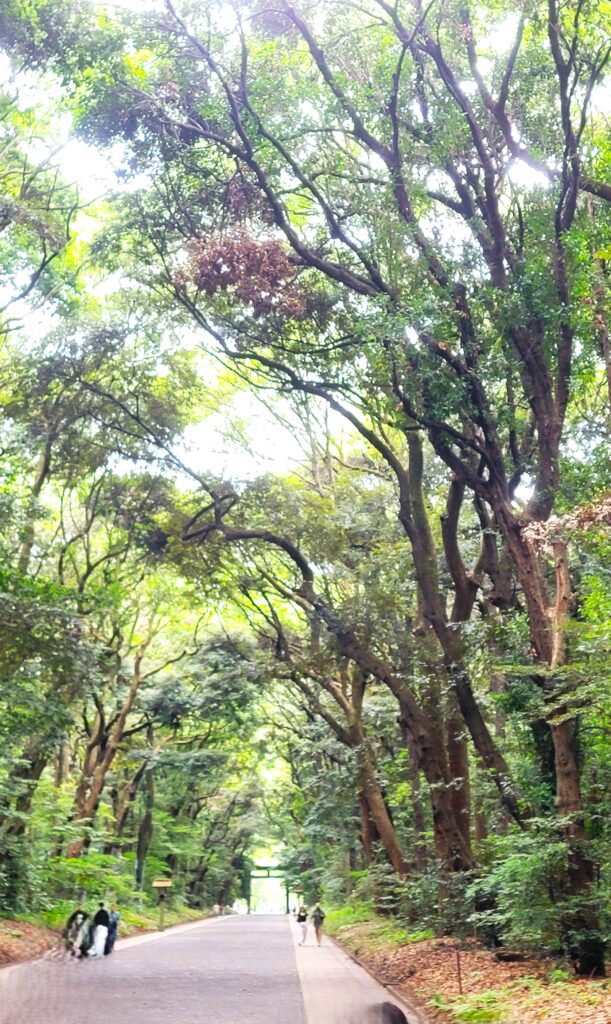

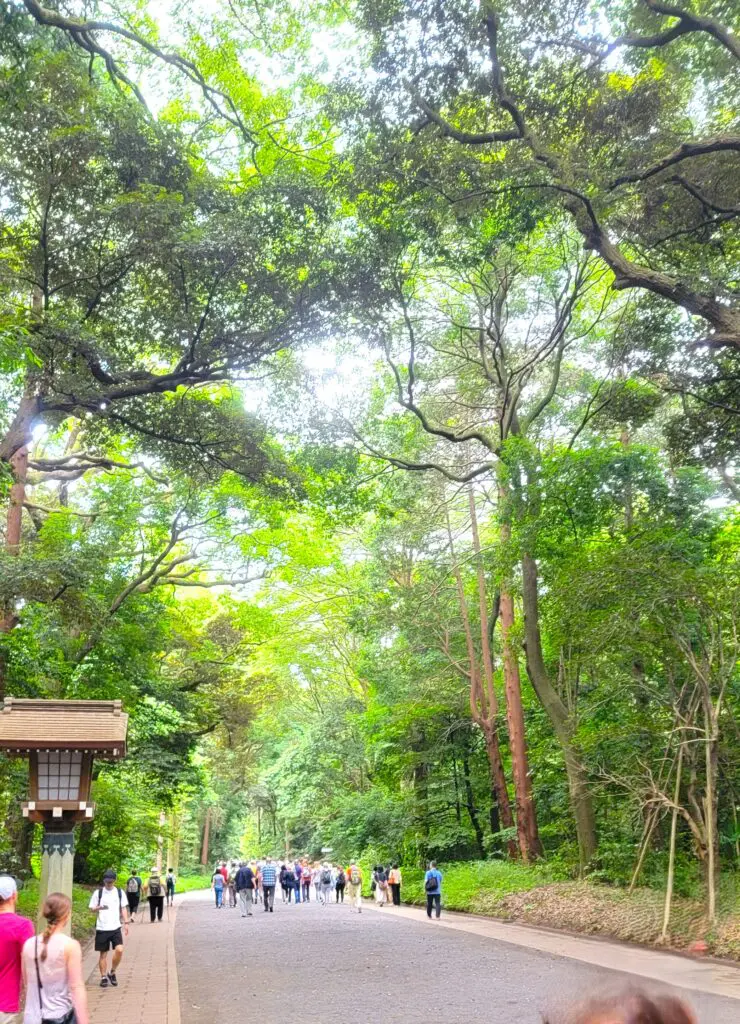
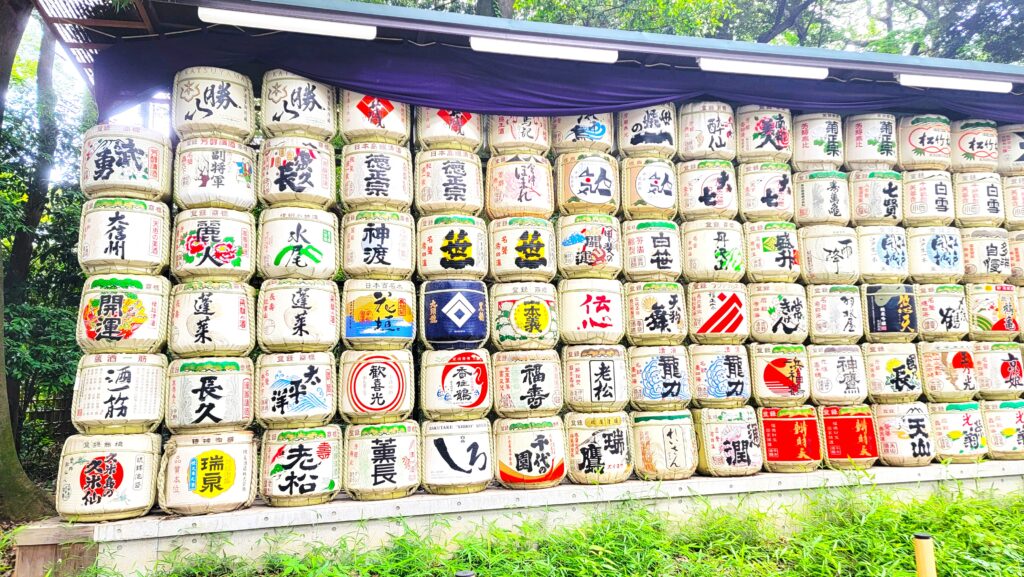
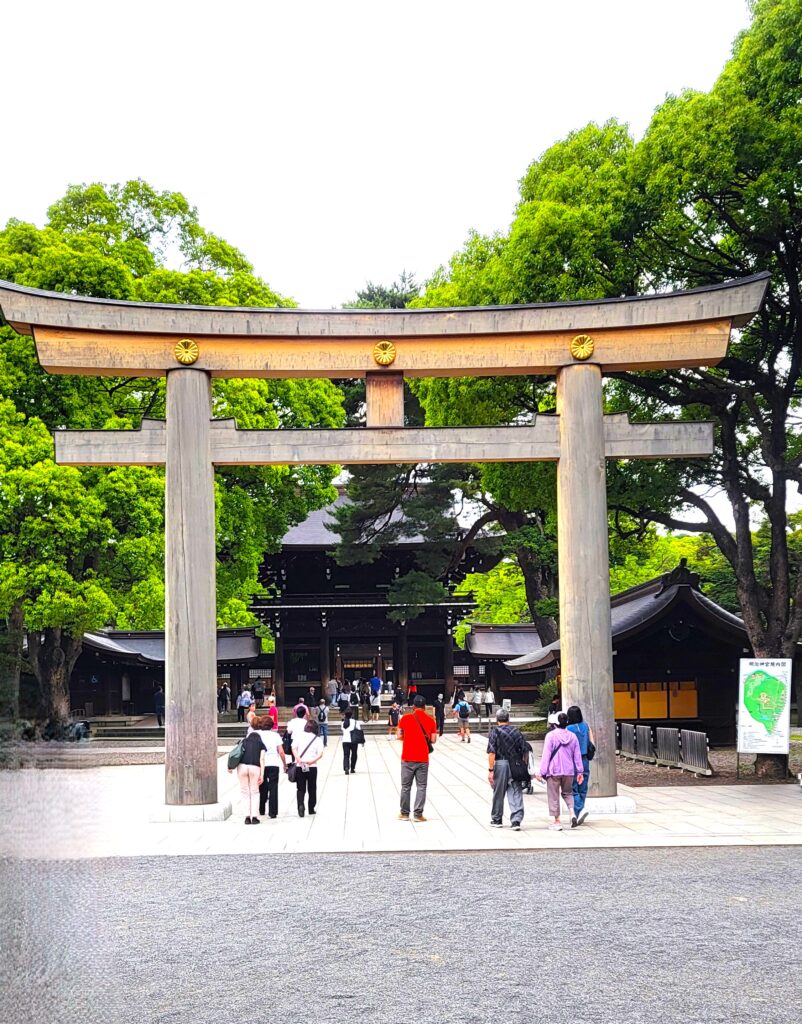
The shrine is located within Yoyogi Park and feels miles away from the buzz of the city—even though it’s just a short walk from Harajuku Station or Meiji-Jingumae Station. Surrounded by a forest of over 100,000 trees, it offers a moment of calm that’s hard to find anywhere else in Tokyo.
We spent a good amount of time on the grounds, especially near the sacred “husband-and-wife” trees.
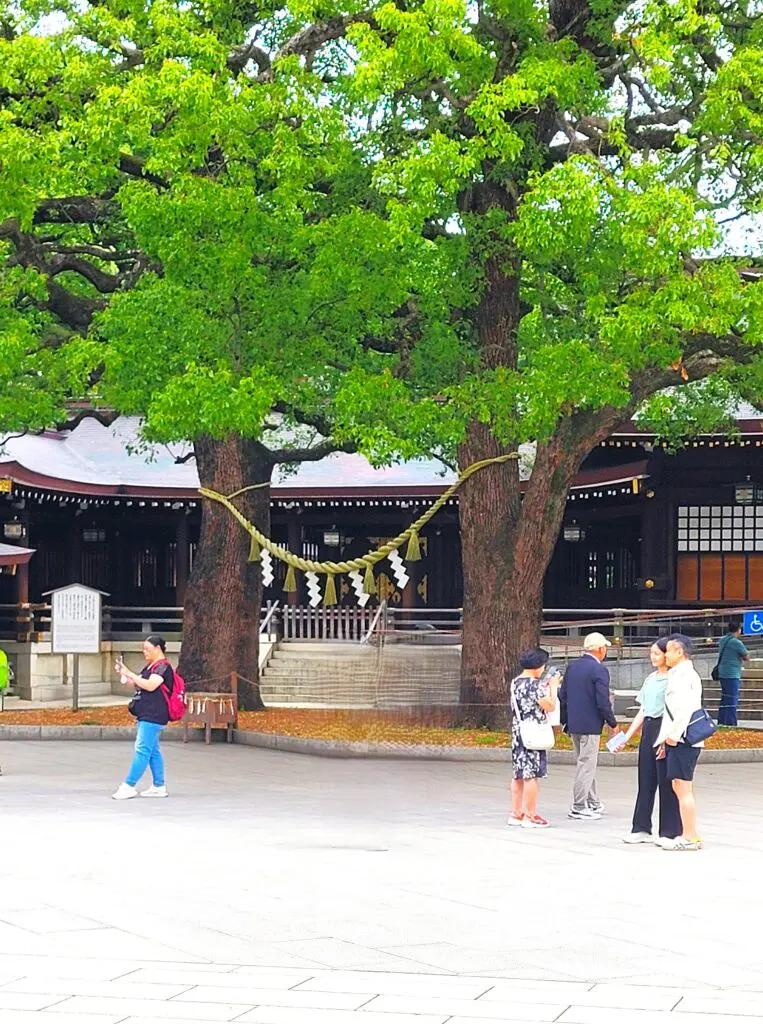
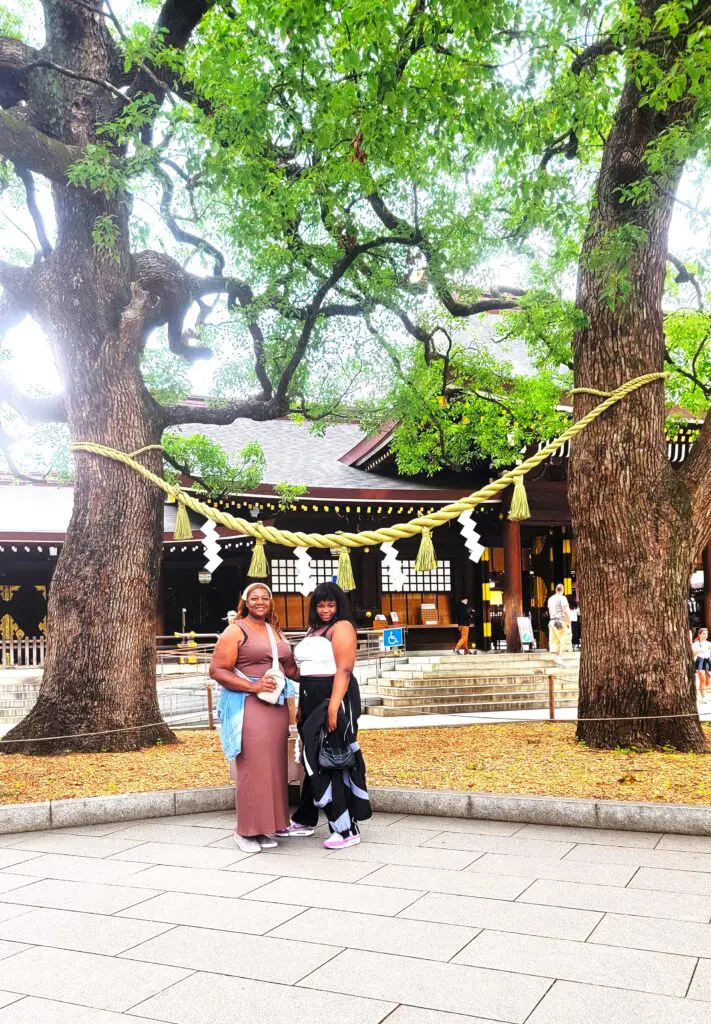
These two massive camphor trees are tied together with a ceremonial rope and represent a harmonious marital relationship. I was hoping some of those marriage vibes would rub off on me me. Haha.
Before we left, we wrote our wishes on wooden ema plaques and hung them alongside hundreds of others at the shrine.
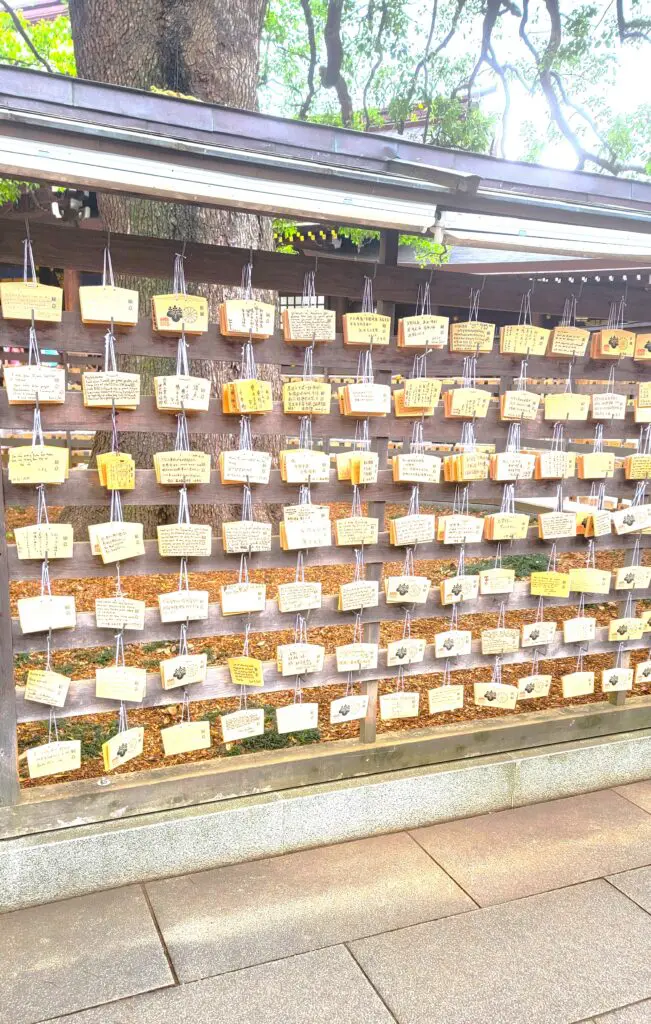
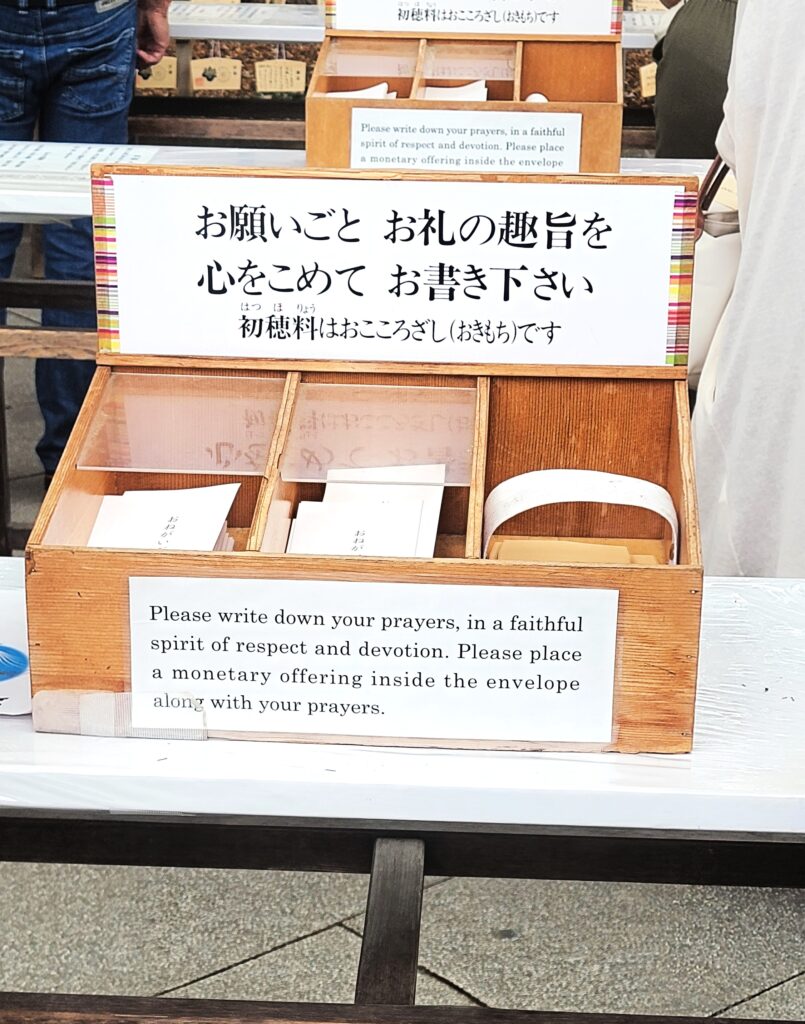
There was something very grounding and human about reading the hopes of strangers while adding our own to the mix. It was a beautiful way to begin the day, and a reminder of the peaceful, spiritual side of Tokyo that can easily get lost in the city’s high-energy pace.
Plan to spend about 45 minutes here, more if you want to take your time exploring the surrounding garden or reflecting quietly in one of the shaded spots.
10:00 AM – Bonsai and Tea Ceremony Experience
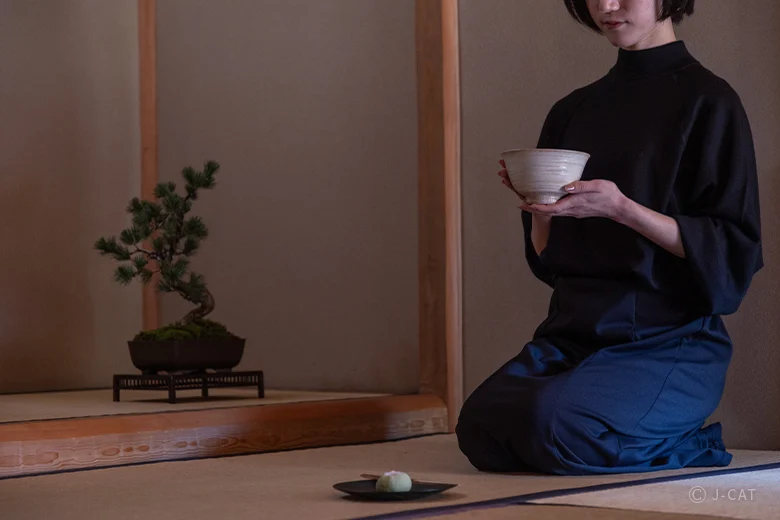
From the spiritual calm of Meiji Shrine, shift into a different kind of mindfulness with a truly immersive cultural experience: a bonsai and tea ceremony at Shunkaen Bonsai Museum. Tour a beautiful bonsai garden 🌲; learn how to mold your own bonsai; and enjoy an elegant Japanese tea ceremony 🍵.
Located in the Edogawa Ward, this museum is home to hundreds of meticulously maintained bonsai trees, some of which are more than 1,000 years old.
Getting There
The best and most direct way to get there is by taxi or Uber. The location is a bit off the main train routes, and while it’s accessible via public transit, the extra time and transfers aren’t ideal when your itinerary is tight. From central Tokyo, plan on about 45–60 minutes of travel time by car, depending on traffic.
But that travel time? Completely worth it.
The Experience
The experience is a beautiful balance of education and hands-on tradition. First, you’ll be guided through the art and history of bonsai—what the shapes mean, how the trees are trained over time, and why the practice has endured for centuries.
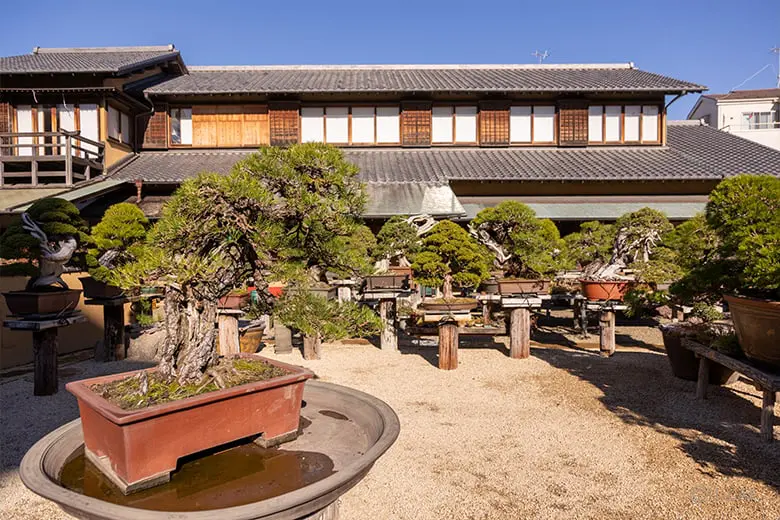
Then, you’ll actually get to mold and shape a bonsai tree yourself, under expert guidance. It’s meditative and surprisingly satisfying.
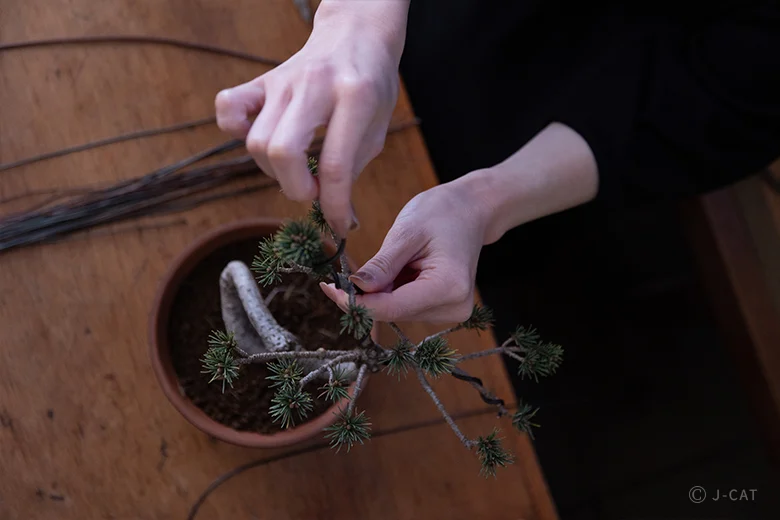
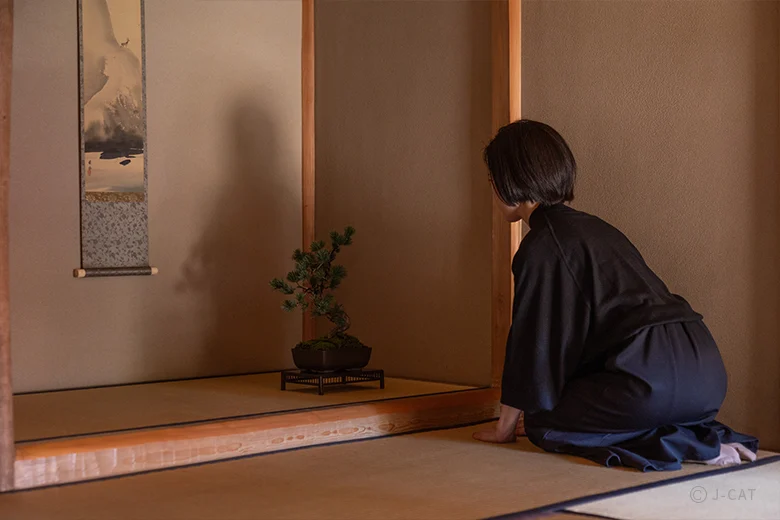
Afterward, you’ll participate in a traditional Japanese tea ceremony in a serene tatami-matted room. Every movement is intentional, and the ritual invites you to slow down and savor the moment. It’s calm, precise, and deeply Japanese.
This might end up being the most memorable and culturally immersive part of your trip. Learn more about this experience and reserve your spot here.
12:30 PM – Lunch and Shopping in the Ginza District
After your bonsai and tea ceremony experience ends around 11:40 AM, head straight to Ginza—Tokyo’s most sophisticated shopping and dining district. It takes about 45 minutes by taxi or train, so you’ll arrive around 12:30 PM, just in time for lunch.
Ginza is where international luxury meets Japanese elegance. If you’re looking for fashion, beauty, electronics, or design-forward home goods, you’ll find it all here. It’s also really beautiful to look at, with polished storefronts, cutting-edge architecture, and wide boulevards made for strolling.
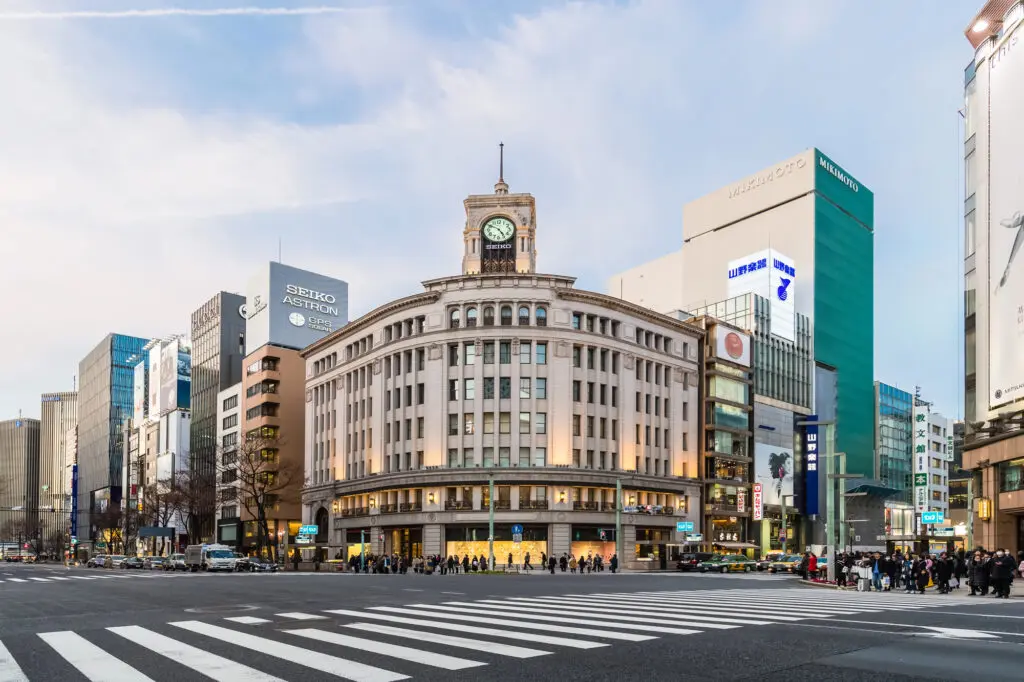
For lunch, consider Ginza Kagari—a cozy but refined ramen shop famous for its creamy chicken-based broth, or Itamae Sushi Ginza Corridor, which offers fresh sushi in a stylish but relaxed setting. You could also opt for a department store food hall (called a depachika), like the one beneath Matsuya Ginza, for a beautifully presented bento or sweets box.
After lunch, spend the next two hours exploring the shopping scene. Start with Ginza Six, a multi-level luxury complex with both high-end labels and curated Japanese brands. The rooftop garden here is a peaceful bonus if you need a break.
Just across the street is Mitsukoshi, Japan’s oldest department store, where you can browse everything from designer clothing and fine jewelry to artisanal Japanese crafts. The service here is impeccable, and even just browsing feels like a cultural experience.
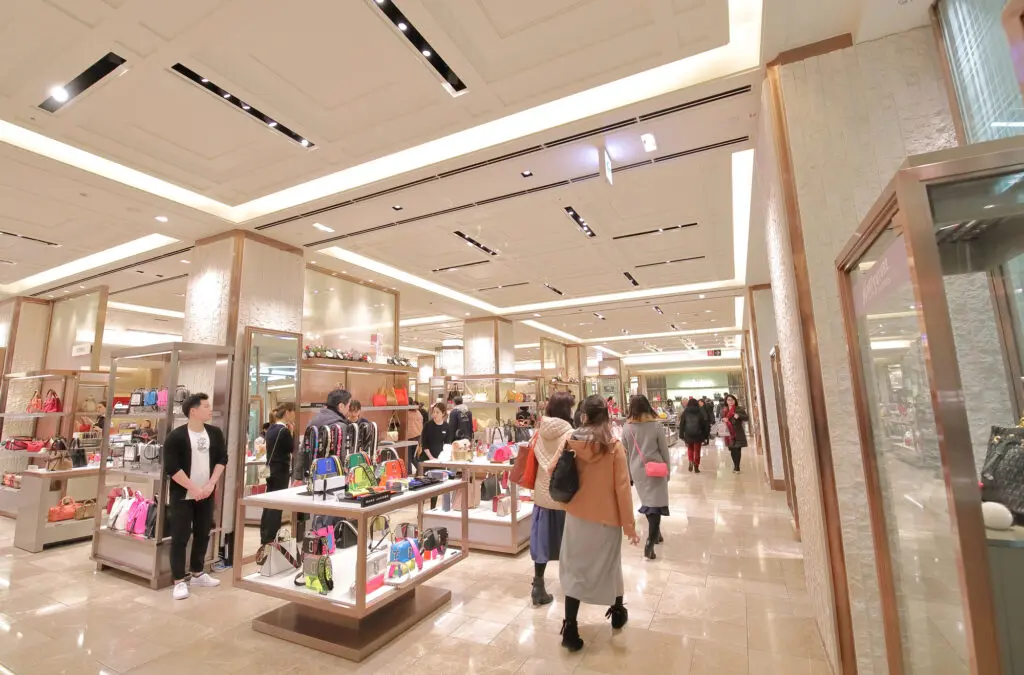
Don’t skip Itoya, either. This iconic 12-floor stationery store is a wonderland of washi paper, pens, journals, and travel accessories—perfect for picking up thoughtful souvenirs or gifts you won’t find anywhere else.
Between the shopping, architecture, and people-watching, Ginza is a beautiful place to lose track of time. Plan to leave around 3:30 PM for the quick trip to Shibuya, another really interesting Tokyo neighborhood.
3:30 PM – Scramble through Shibuya
After a stylish and elegant afternoon in Ginza, shift gears again and head to Shibuya for a lively final stop in Tokyo. It’s about a 20-minute ride by train or taxi, and the contrast in energy will be immediately noticeable. Shibuya is bright, chaotic, fun—and unmistakably modern Japan.
Start at the famous Hachiko Statue just outside Shibuya Station. This bronze dog is a beloved symbol of loyalty and a popular meeting spot.
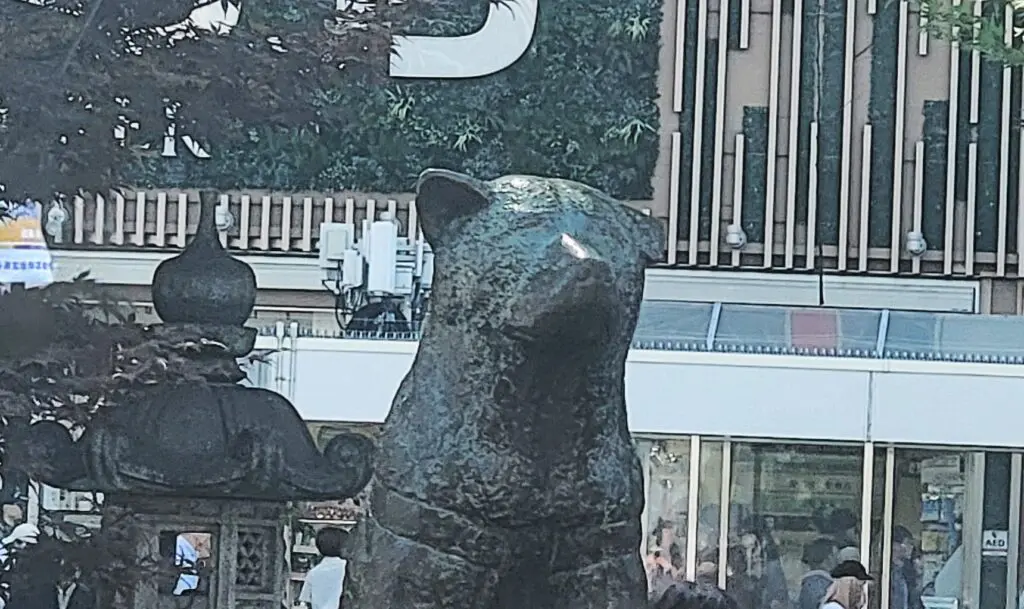
We paused here for a quiet moment, taking in the story of Hachiko and his unwavering devotion to his owner. It’s a sweet, grounding moment in an otherwise fast-paced part of the city.
Then it was time for the Shibuya Scramble Crossing, one of the busiest intersections in the world. Even though it wasn’t quite as crowded when we visited as it sometimes appears in videos, it was still totally surreal.
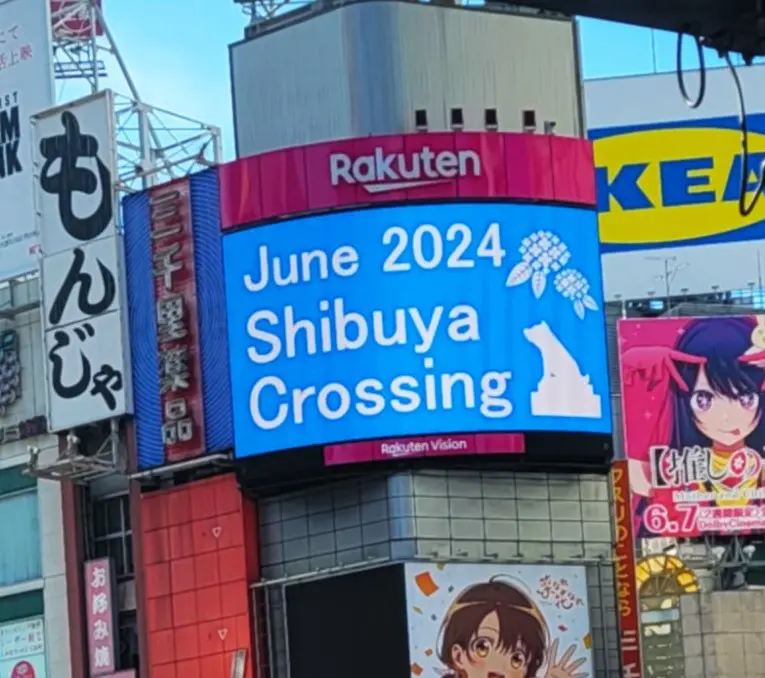
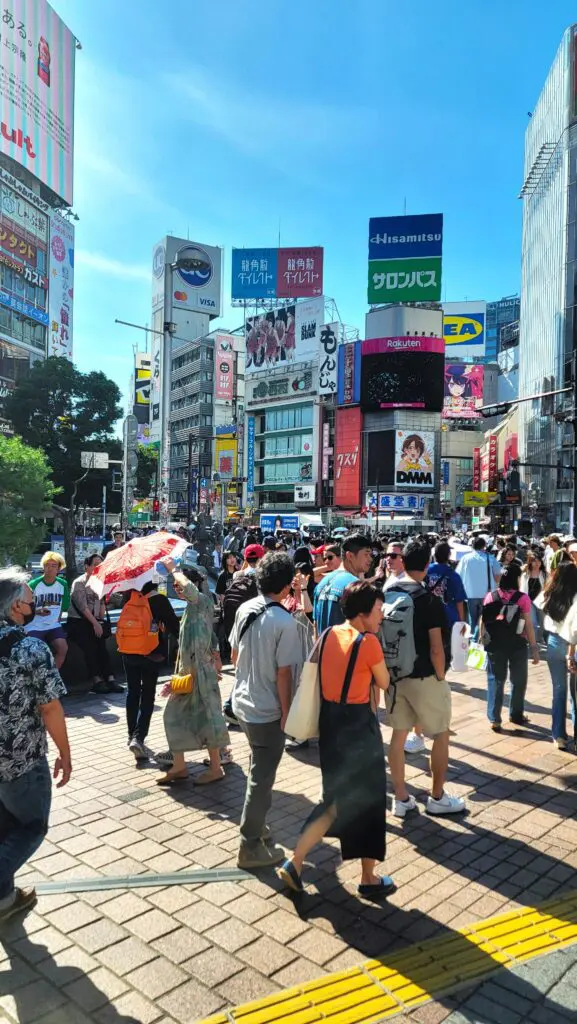
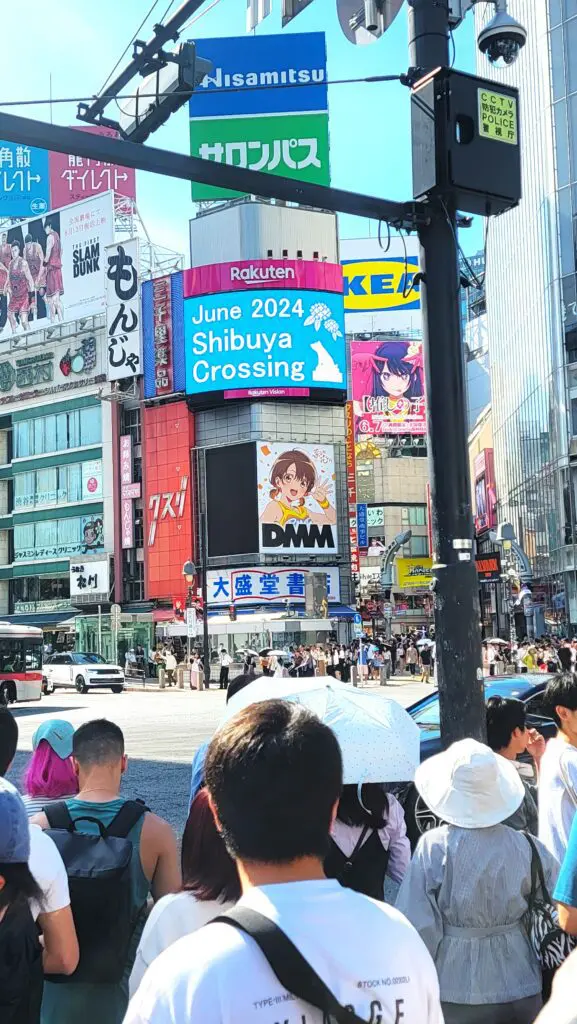
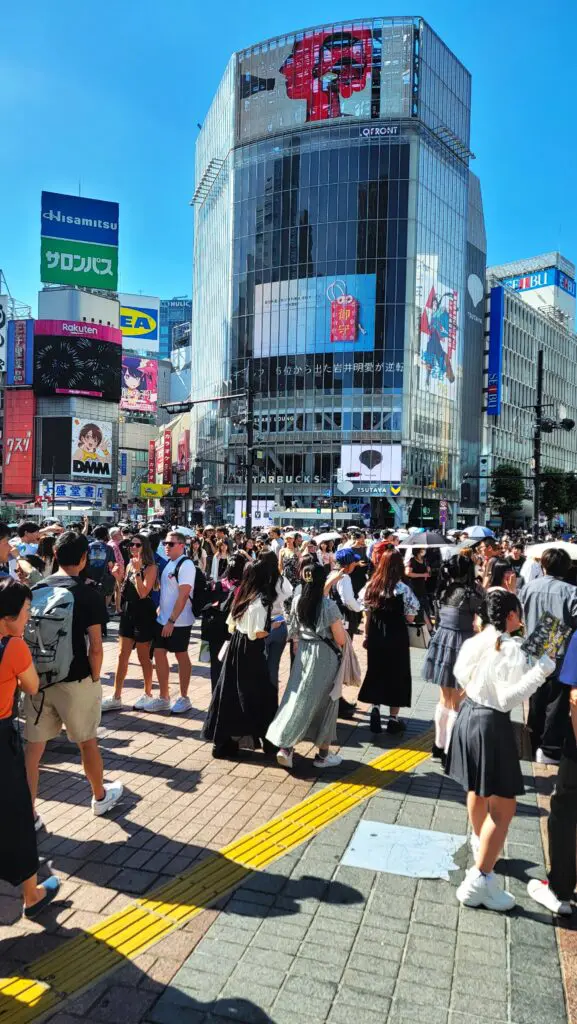
We joined the wave of people crossing from every direction at once. Somehow, the chaos is perfectly choreographed. My daughter and I took a few selfies in the middle of the crossing—it’s something we’ll never forget.
From there, you can explore Shibuya Scramble Square and, if heights don’t bother you, take in the incredible city views from Shibuya Sky. My daughter is a bit afraid of heights, so we didn’t hang around too long, but the quick peek was worth it for the panoramic perspective.
More Shopping!
If you still have some energy left, this is a great time to do a final round of shopping.
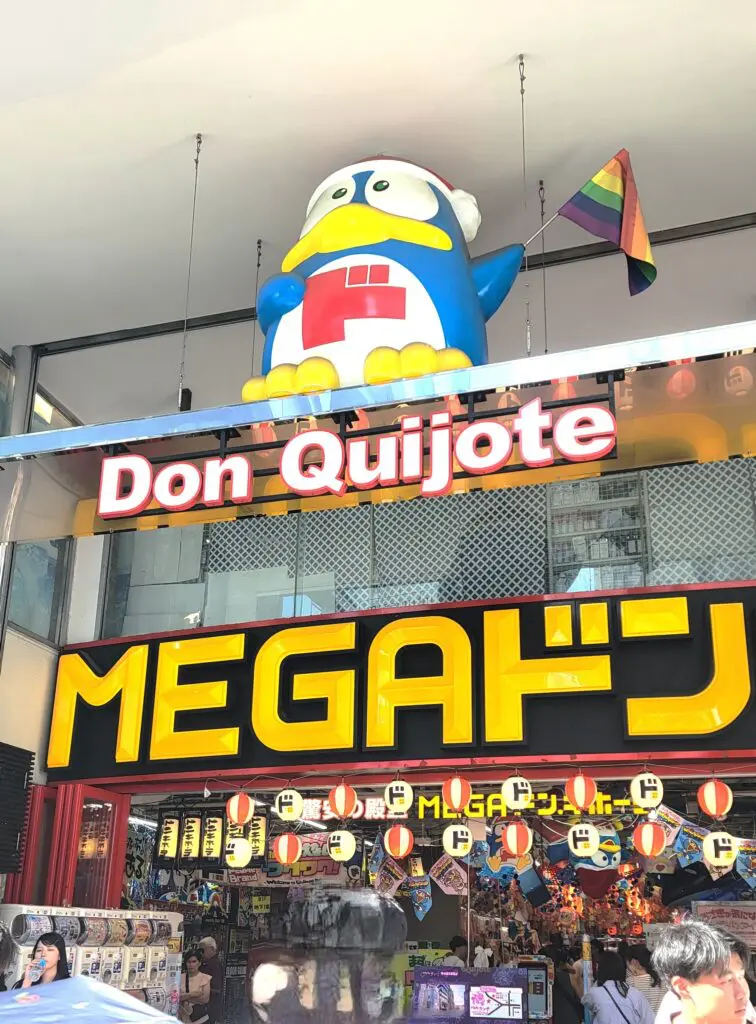
We loved visiting Don Quijote, a sprawling discount megastore where we picked up matcha Kit Kats and quirky Japanese souvenirs. The atmosphere was pure fun—bustling, colorful, and a little overwhelming in the best way.
Shibuya is a perfect place to end your Tokyo visit on a high note—dynamic, full of personality, and packed with memories.
6:00 PM – Dinner or Departure Options
After a packed second day of sightseeing, shopping, and cultural immersion, you’ll likely be ready to take it easy.
If you’re staying at Keio Plaza Hotel, this is a great night to take advantage of its impressive dining options without having to venture back out into the city.
The hotel offers a range of restaurants, including:
- Kyubey – for refined Japanese sushi in a serene setting
- Kagari – a stylish teppanyaki experience with high-end Wagyu beef
- Jurin – a casual all-day dining spot with both Western and Japanese dishes
Eating in your hotel lets you unwind and reflect on your last day without the hassle of more travel or crowds.
Prefer to be out and about for your last night in Tokyo? Consider a relaxed ramen dinner followed by a fun round of karaoke in a private booth—Tokyo-style.
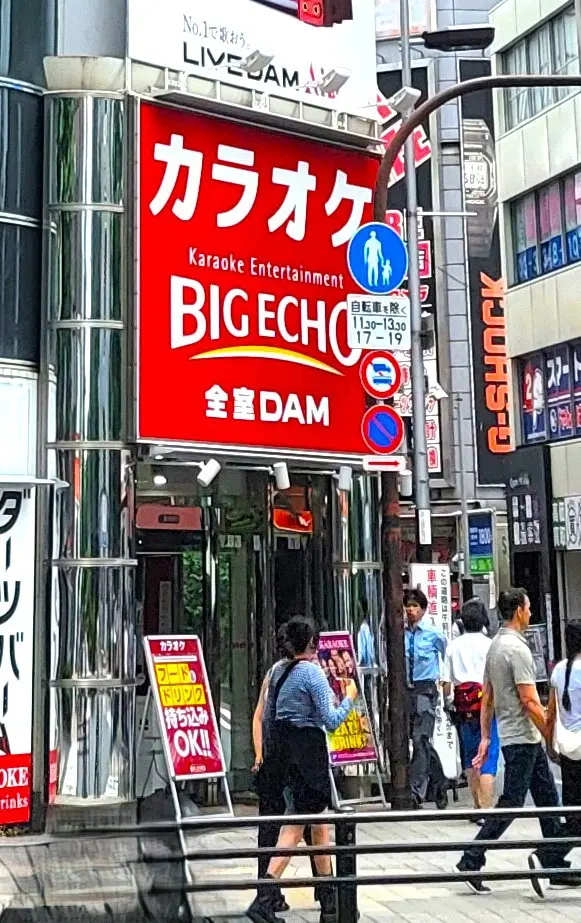
Many karaoke spots in Tokyo – like the Big Echo chain shown here – offer food and drink service right to your room, making it a perfect way to end the trip on a fun, lighthearted note without a lot of logistics.
Optional Add-Ons and Swaps
Two days in Tokyo goes fast—and it’s impossible to do everything. But depending on your interests, energy level, and travel companions, here are a few thoughtful options to consider swapping in (or adding on if your schedule allows).
Swap-In Options
- Shinjuku Gyoen National Garden: Prefer a quieter, nature-filled morning over the Imperial Palace East Garden? This large, beautifully landscaped park in Shinjuku features traditional Japanese, English, and French-style gardens. It’s especially stunning during cherry blossom or fall foliage seasons.
- Tokyo National Museum: If you’re drawn to Japanese history and culture, swap out Ginza shopping for a few hours at this top-tier museum in Ueno Park. It’s the best place to immerse yourself in traditional art, samurai armor, and archaeological finds.
- teamLab Planets: For a completely different kind of experience, consider this immersive digital art museum in Toyosu. Walk through water, mirrors, and light installations that will blow your mind. Great for teens, adults, and anyone who loves a visual spectacle.
Add-On Options
- Mount Fuji Day Trip: If you’re extending your time in Japan, a day trip to see Mount Fuji is a must. We did this and loved it! You can read about our full experience here.
- Kyoto Day Trip: Another option if you have more time is a bullet train day trip to Kyoto. We toured the temples and gardens and wrote all about the best way to do it in this post.
- Ghibli Museum: A magical stop for fans of Studio Ghibli films. Located in Mitaka, this museum requires advance reservations but is well worth it for anyone who loves Totoro, Spirited Away, or Princess Mononoke.
- Sumo Practice Viewing: For a rare behind-the-scenes look at Japanese culture, visit a sumo stable in the morning to watch live training sessions. Tours are available through platforms like GetYourGuide.
These alternatives give you flexibility to shape your Tokyo visit around your interests—whether that means a cultural deep dive, time in nature, or just more fun.
Tips for Traveling Tokyo with Teens
Tokyo is one of the best cities in the world to visit with a teenager—but it’s still a big, busy place. Here are a few tips from our own experience that helped make our trip fun and smooth:
- Let them help plan: Teens are way more engaged when they get to pick a few things themselves. My daughter chose Harajuku as her must-see, and it ended up being a highlight of the entire trip.
- Mix in downtime: It’s easy to over-schedule in Tokyo. Be sure to build in pauses—like a relaxing hour at a micropig café or matcha stop. These moments help recharge before the next big sight.
- Don’t underestimate shopping: Even if you’re not big on shopping, Tokyo’s stores are attractions in themselves. From Takeshita Street to Don Quijote, these places are full of personality—and great for souvenirs.
- Give them a role: Ask your teen to be the documentarian for the trip—whether it’s snapping pics, journaling, or keeping a video diary. It gives them a purpose and keeps them connected to what’s happening around them.
- Let them choose a meal: Tokyo’s food scene is overwhelming—in a good way. Giving your teen the chance to pick a ramen joint or dessert stop can make them feel more invested and excited about trying new things.
- Balance tradition and fun: Combining things like a bonsai experience with a karaoke night ensures everyone feels like they’re getting a little of what they want—and seeing the many sides of Tokyo.
With the right balance, traveling with teens can lead to some of the most meaningful and memorable moments of your trip.
Final Thoughts: Two Days in Tokyo, Just Right
Whether you’re traveling solo, with friends, or—as I did—with a teen discovering Tokyo for the first time, this two-day itinerary gives you a mix of iconic highlights and personal moments. From ancient shrines and sushi counters to boutique shopping and bonsai-making, it’s a blend of fast-paced fun and quiet cultural insight that captures what Tokyo does best.
There’s no single “right” way to experience this city. That’s why I always recommend travelers take my Tokyo Travel Style Quiz before locking in an itinerary. It’ll help you figure out what your Tokyo looks like—whether that means bold fashion, deep tradition, or late-night neon adventures.
Wherever your Tokyo trip takes you, I hope this post helps you get the most out of every moment. Safe travels—and I hope you love it as much as we did.


